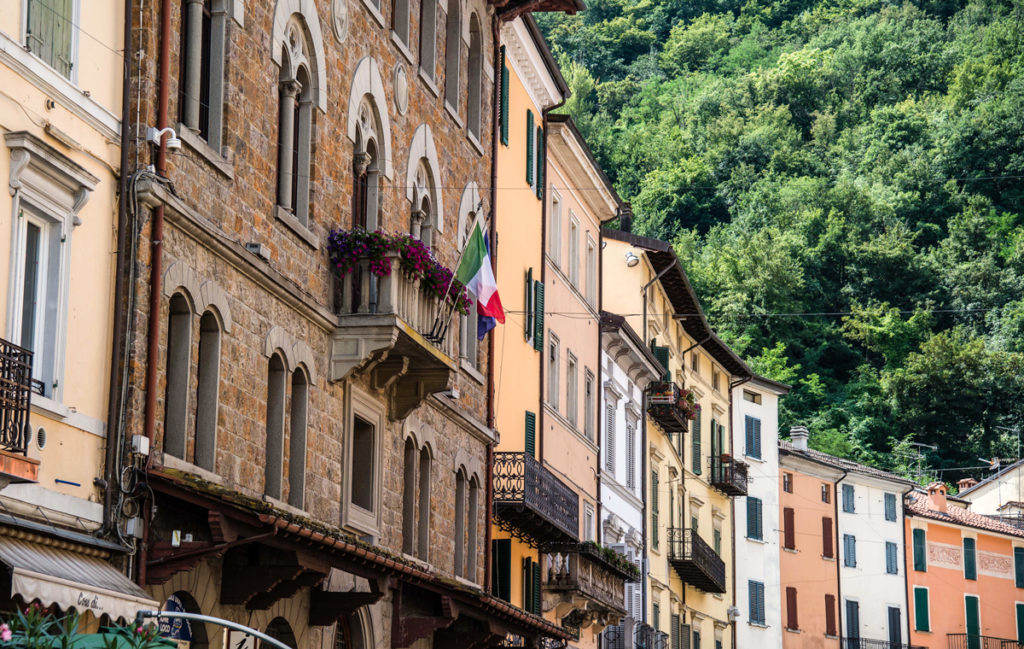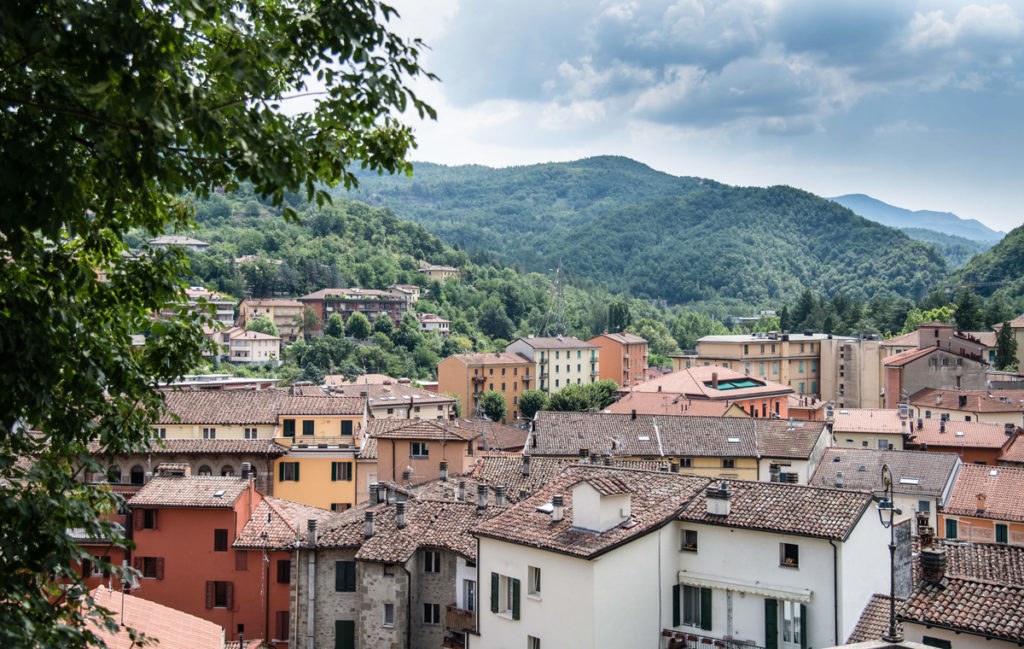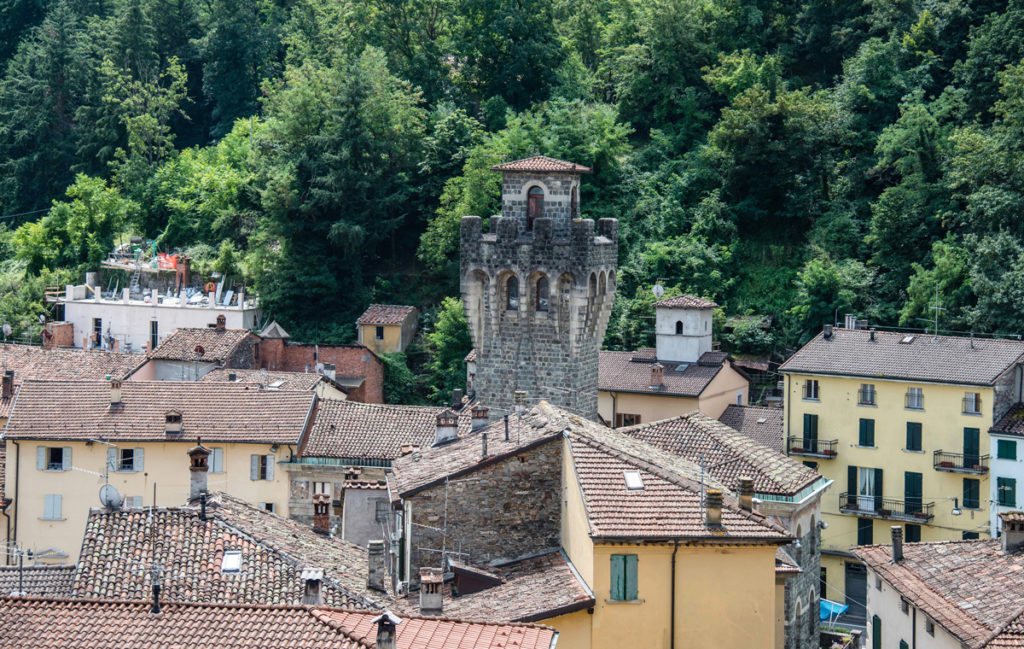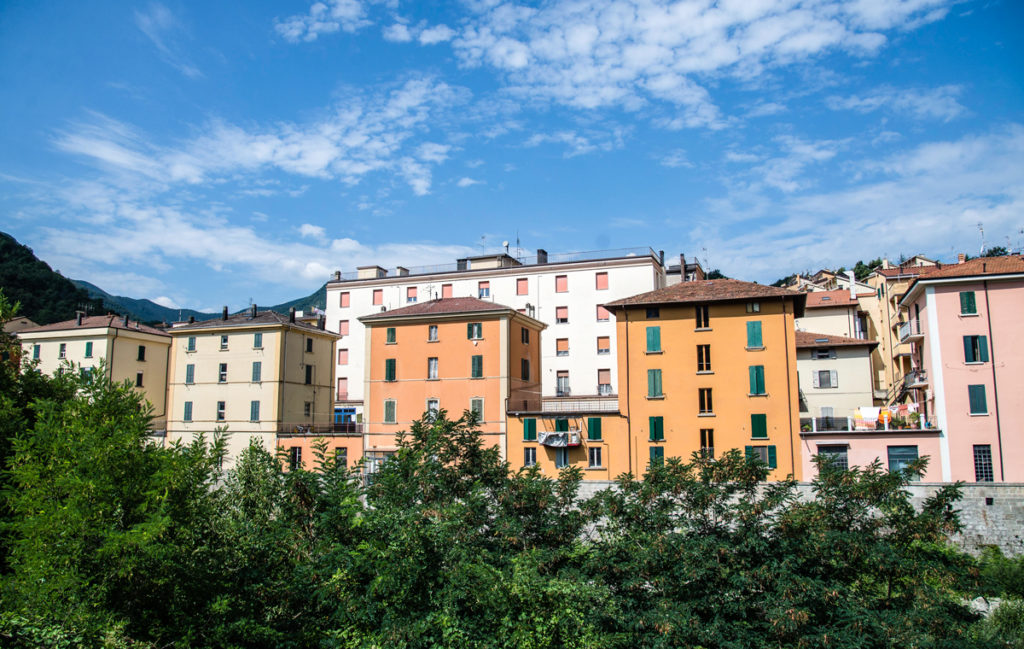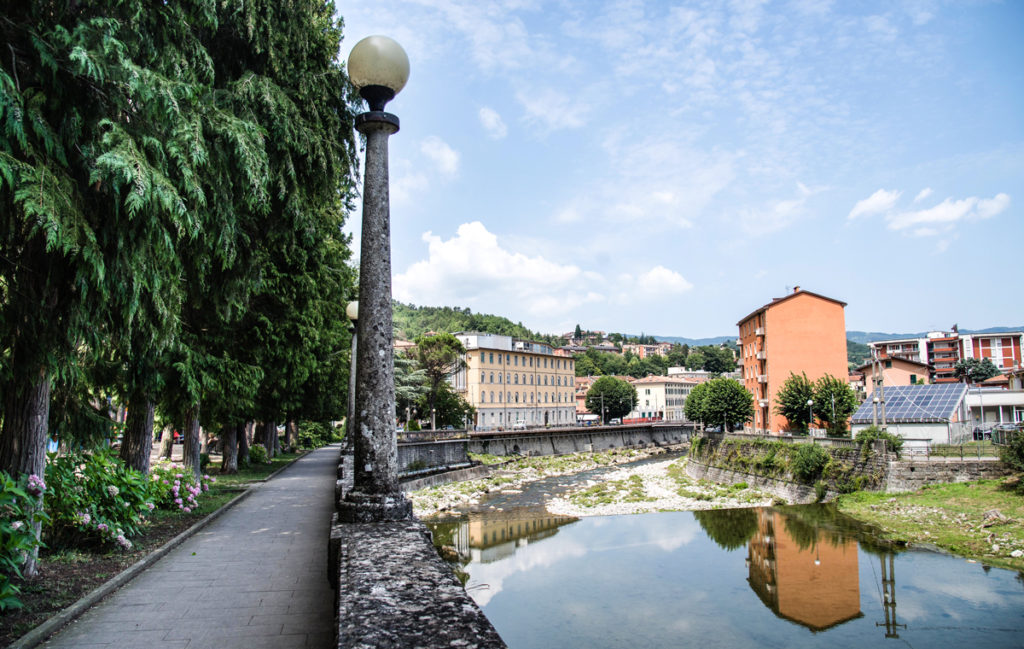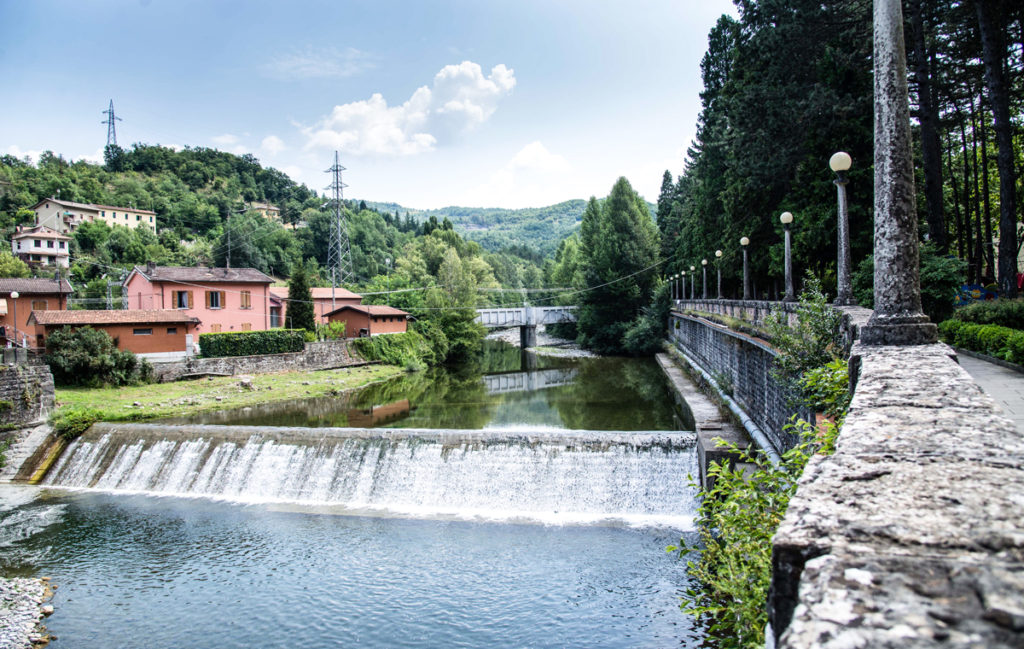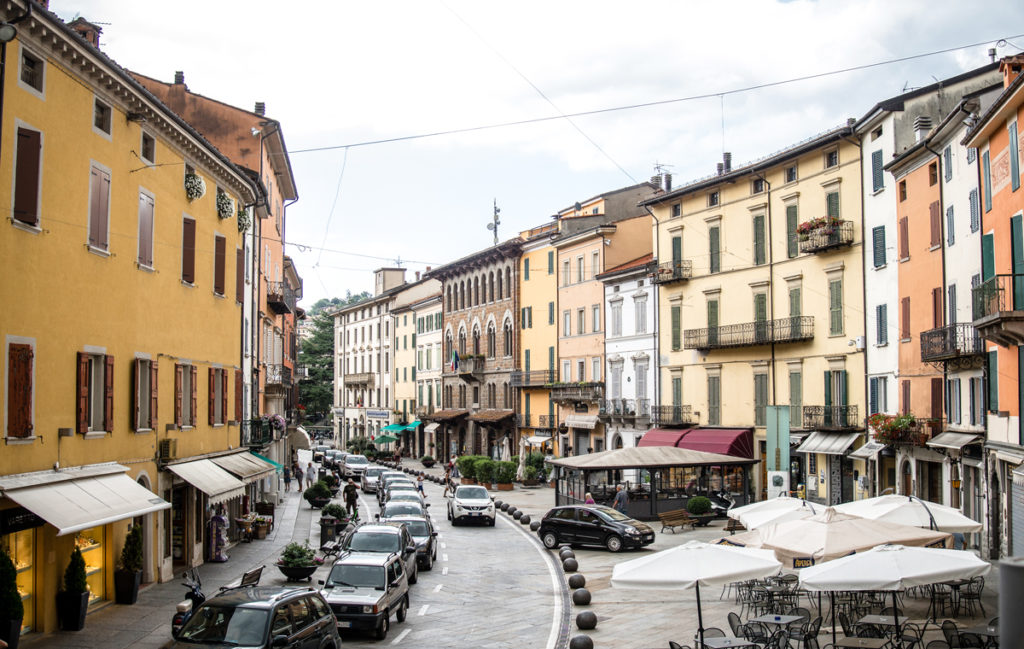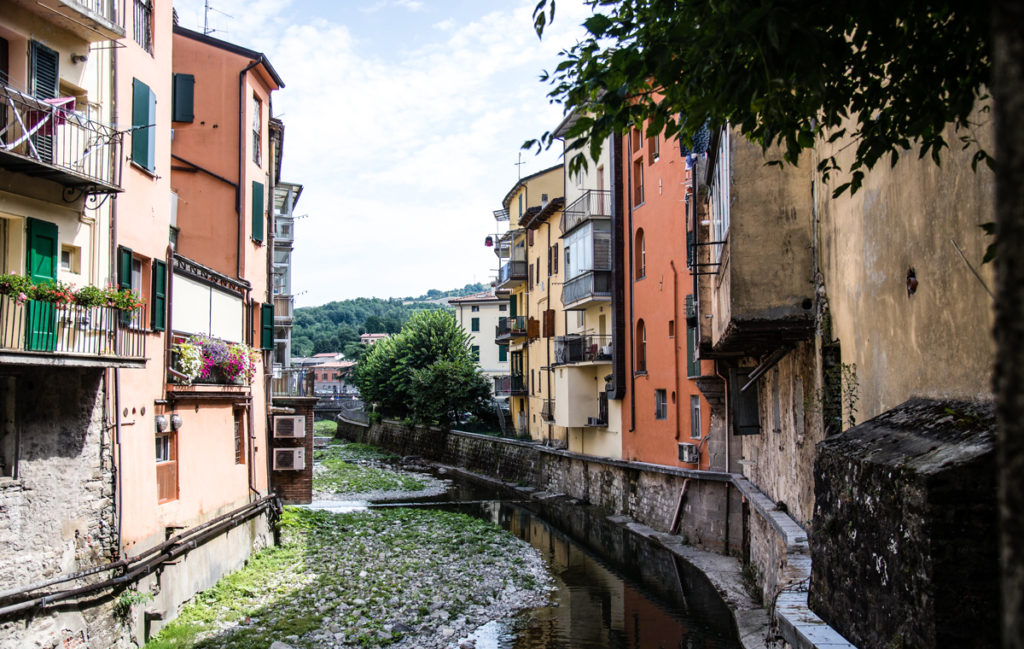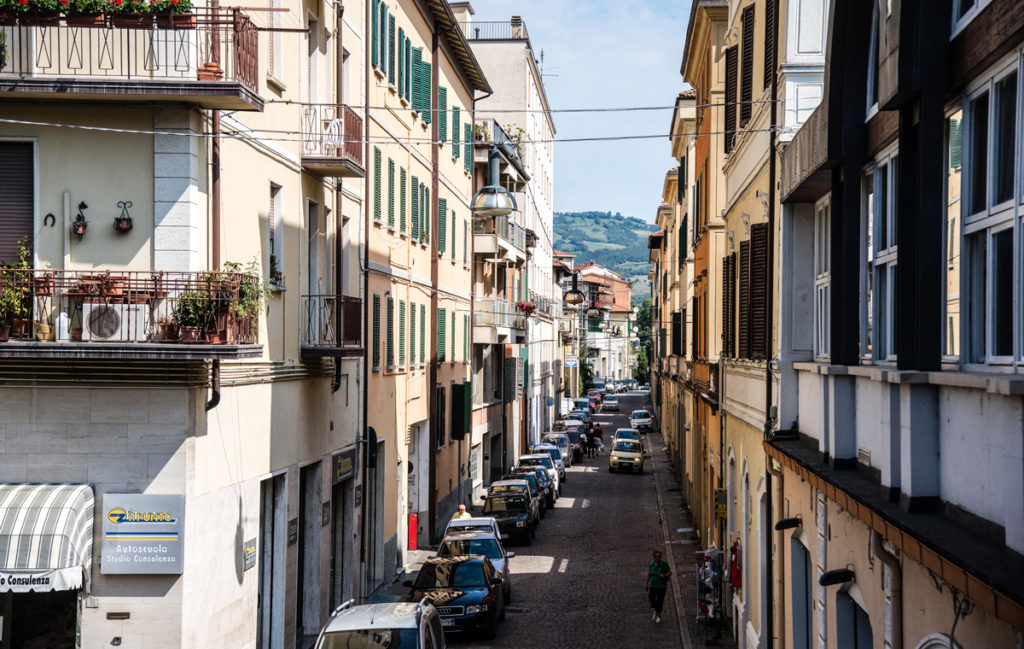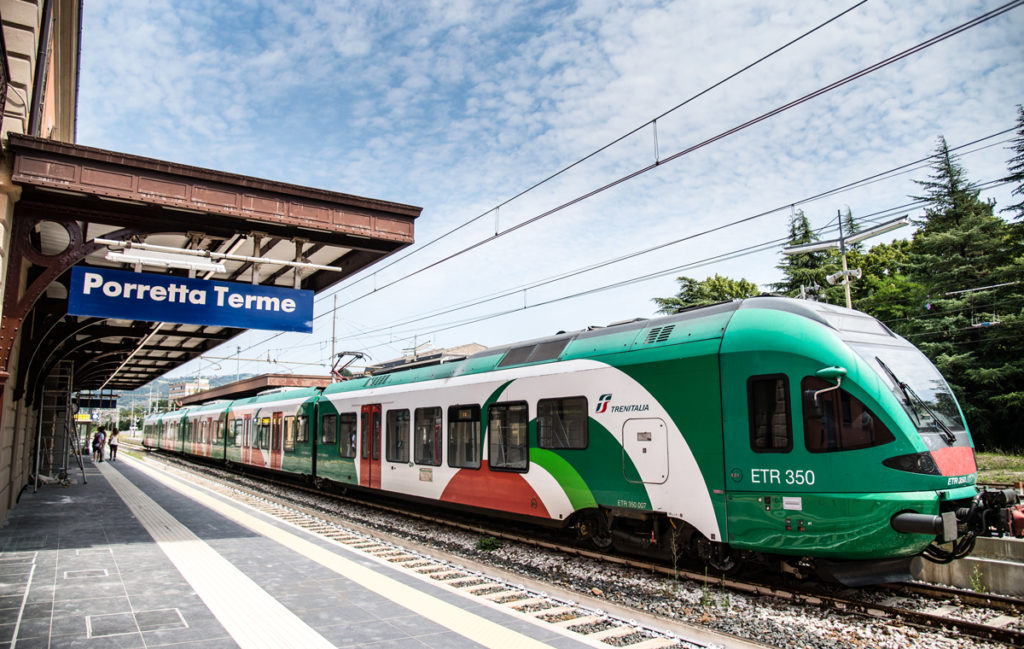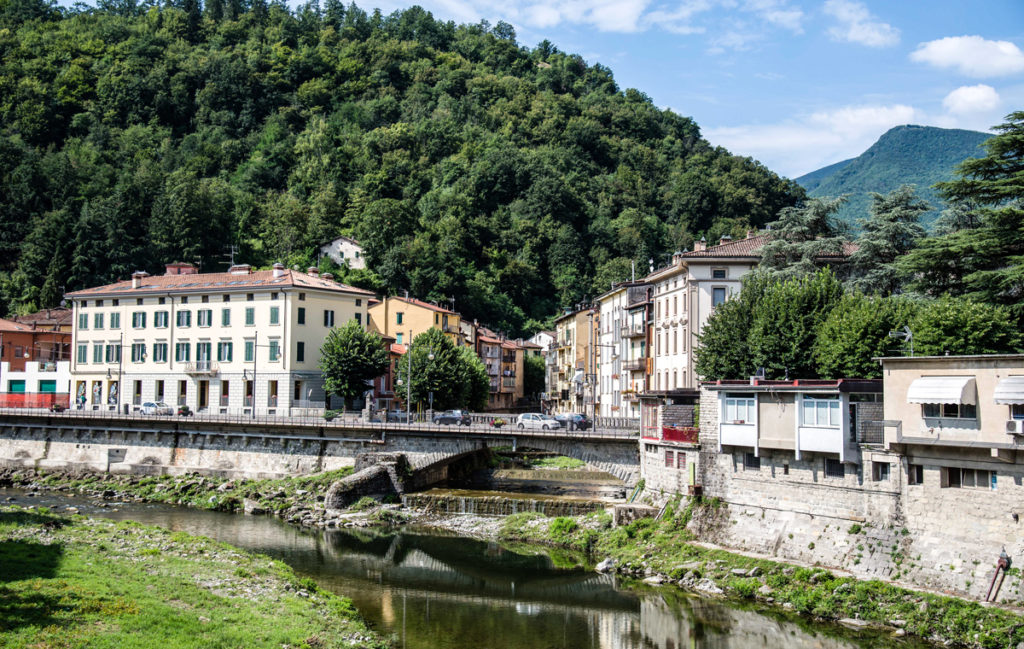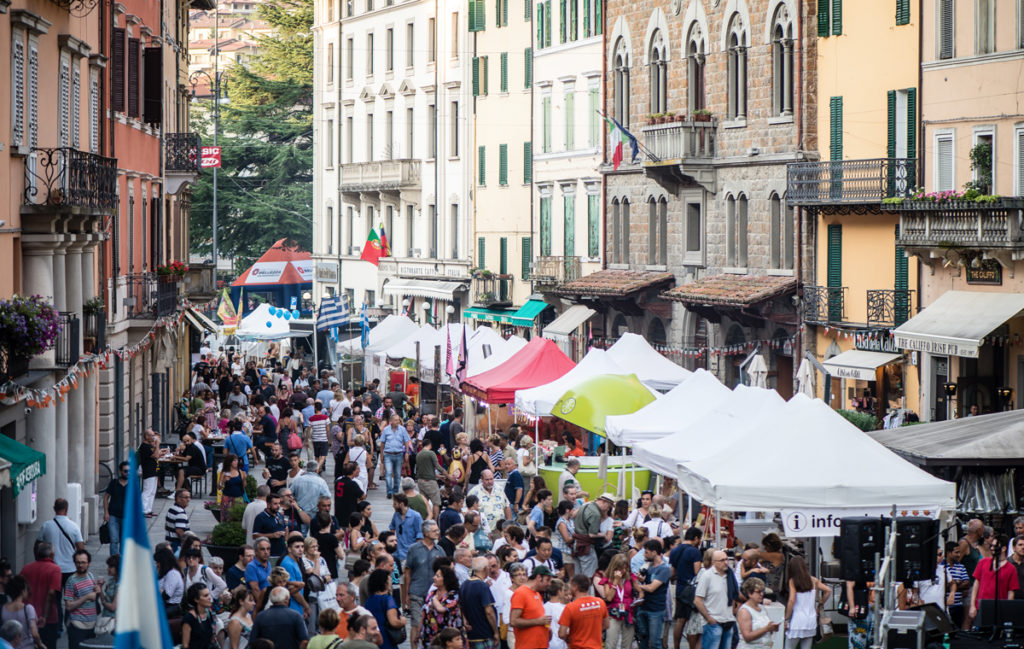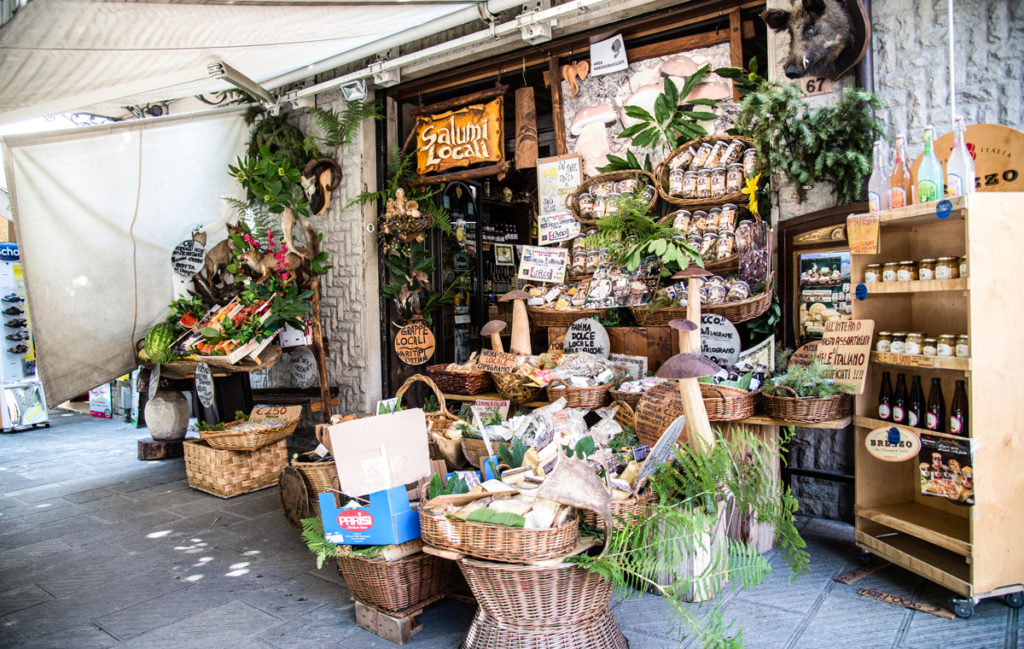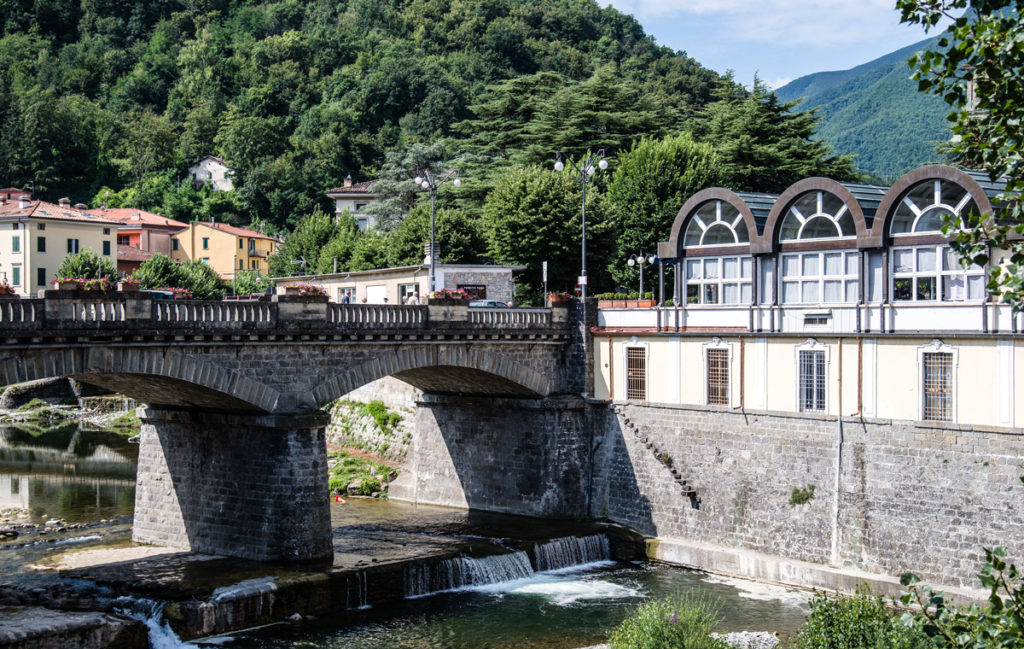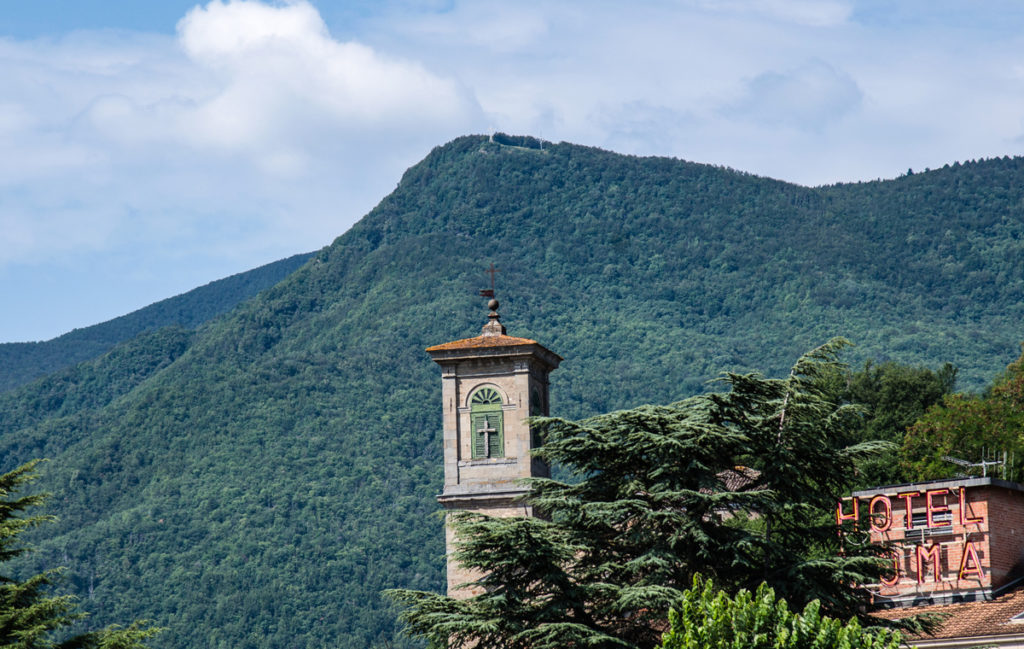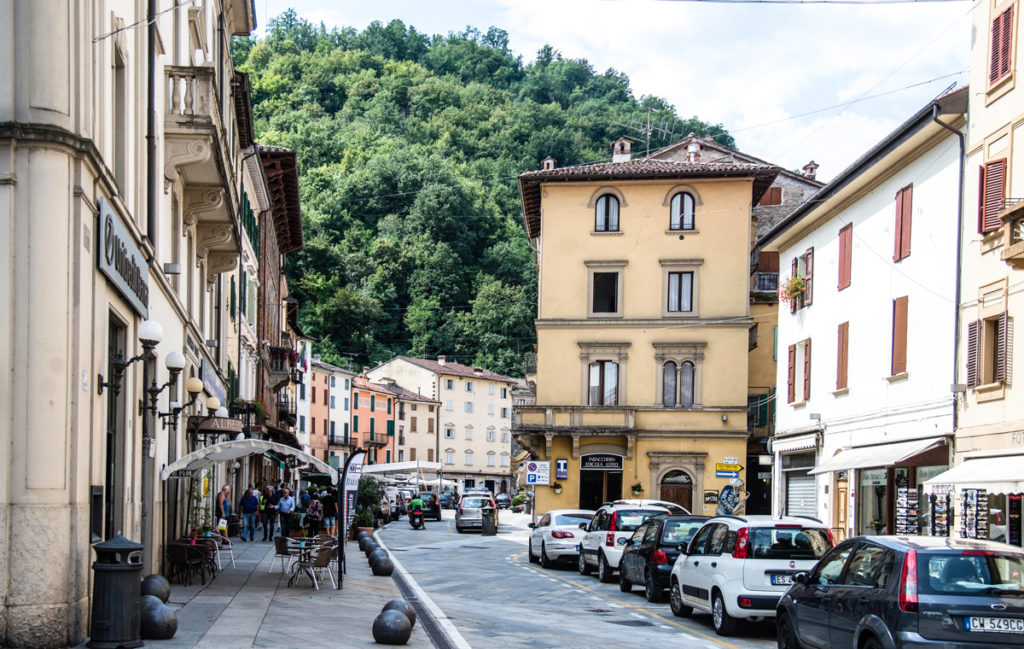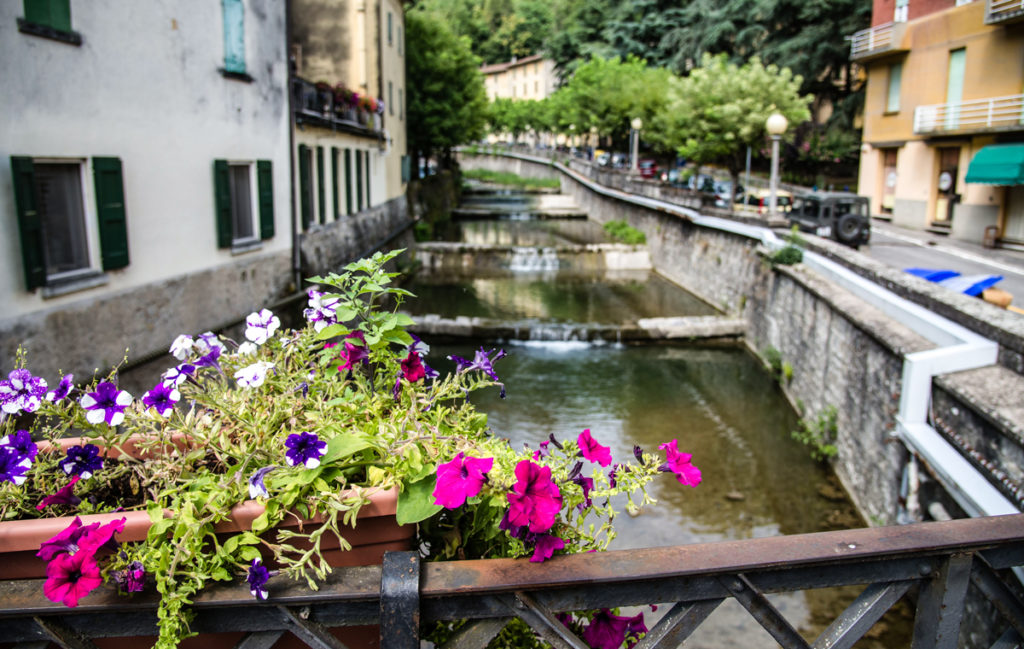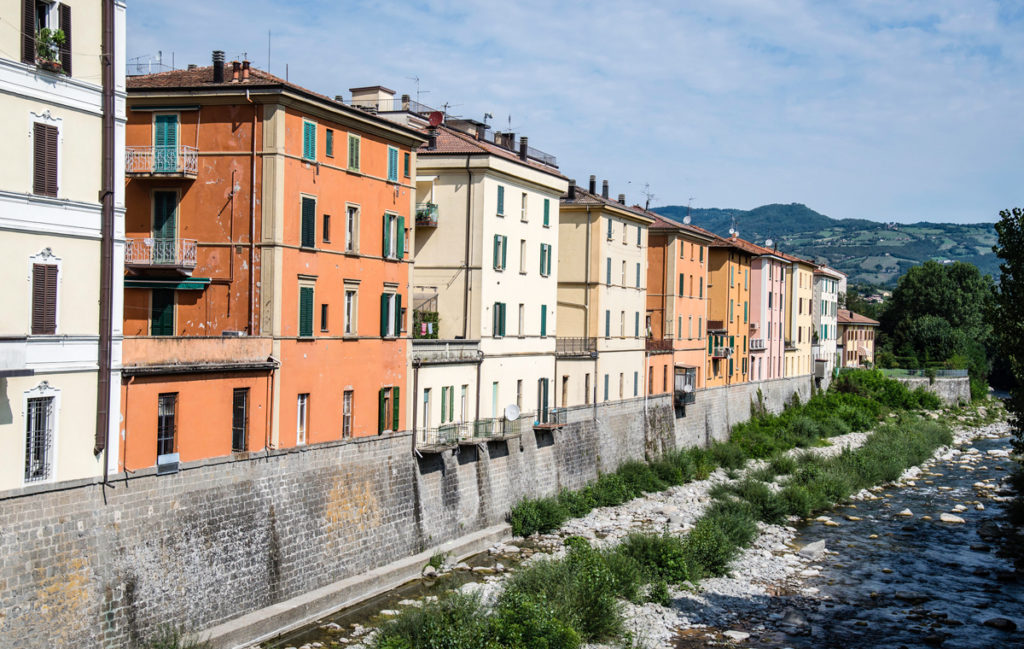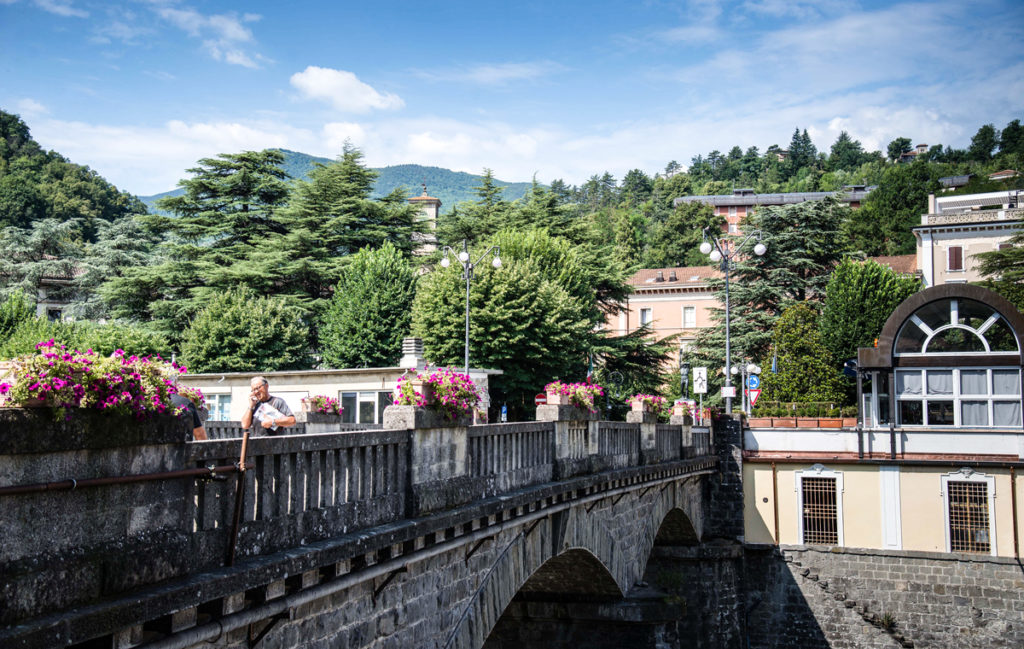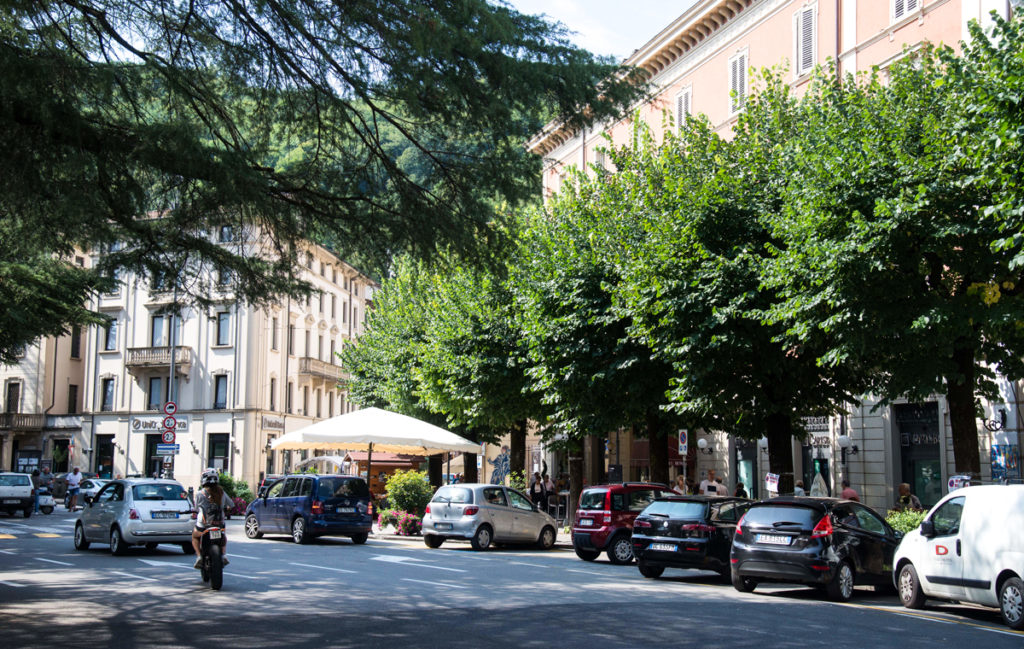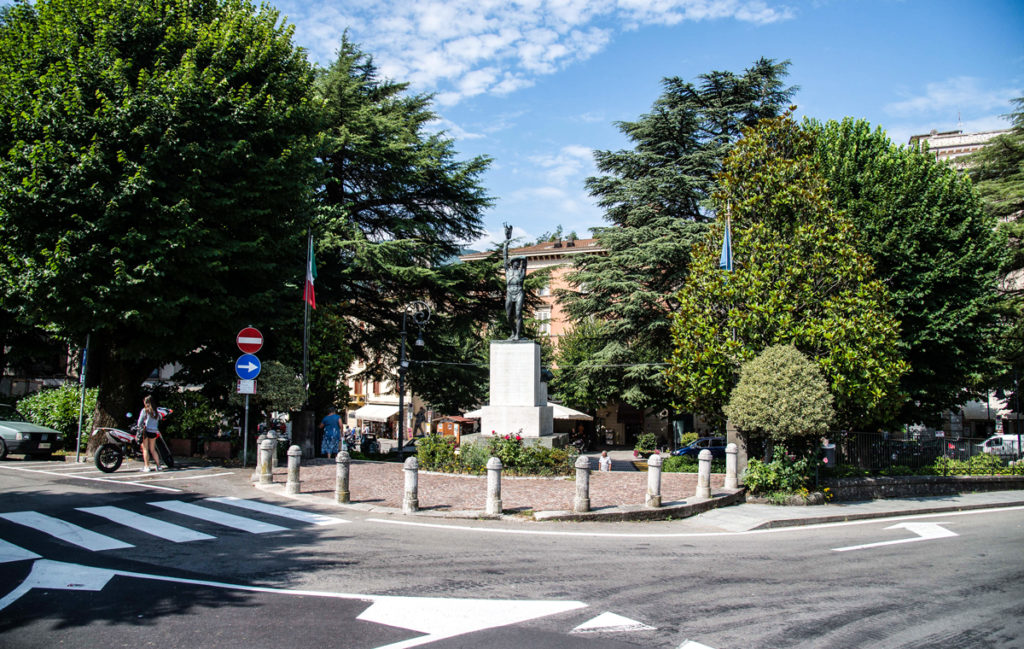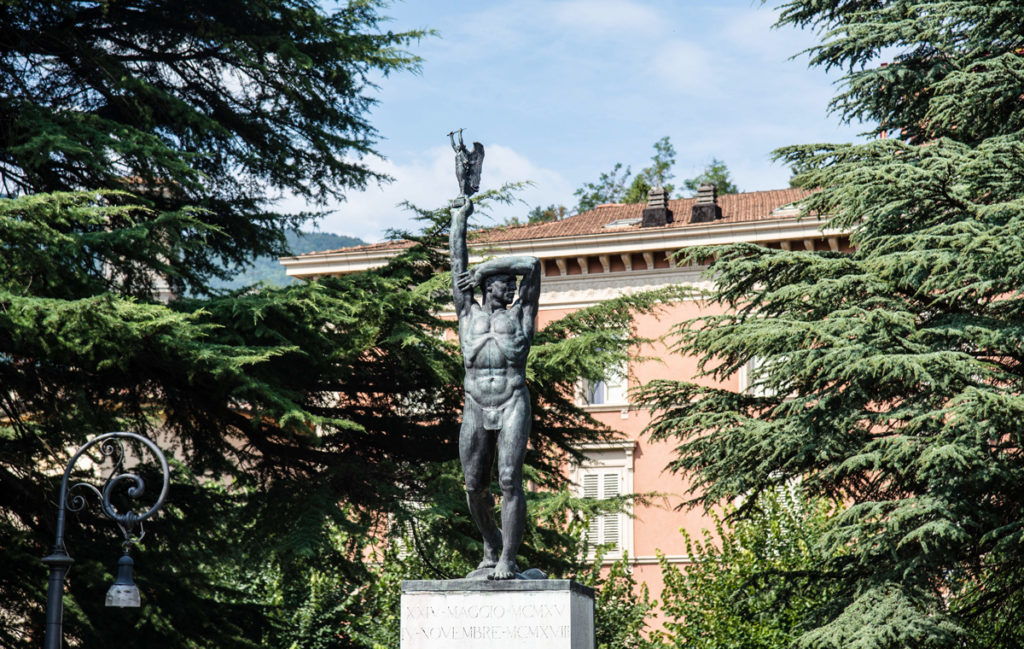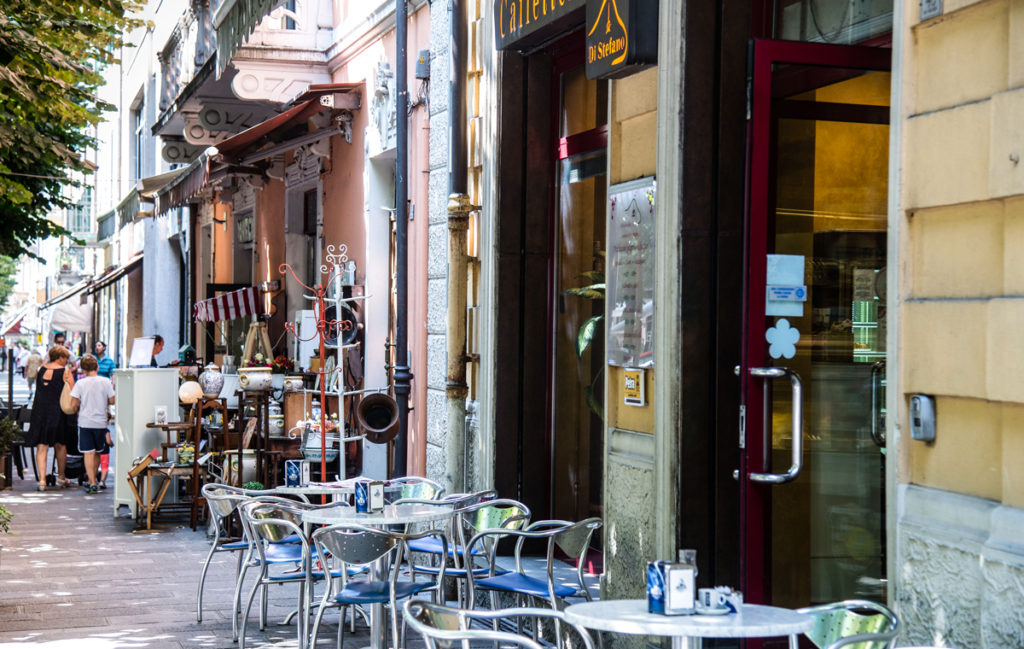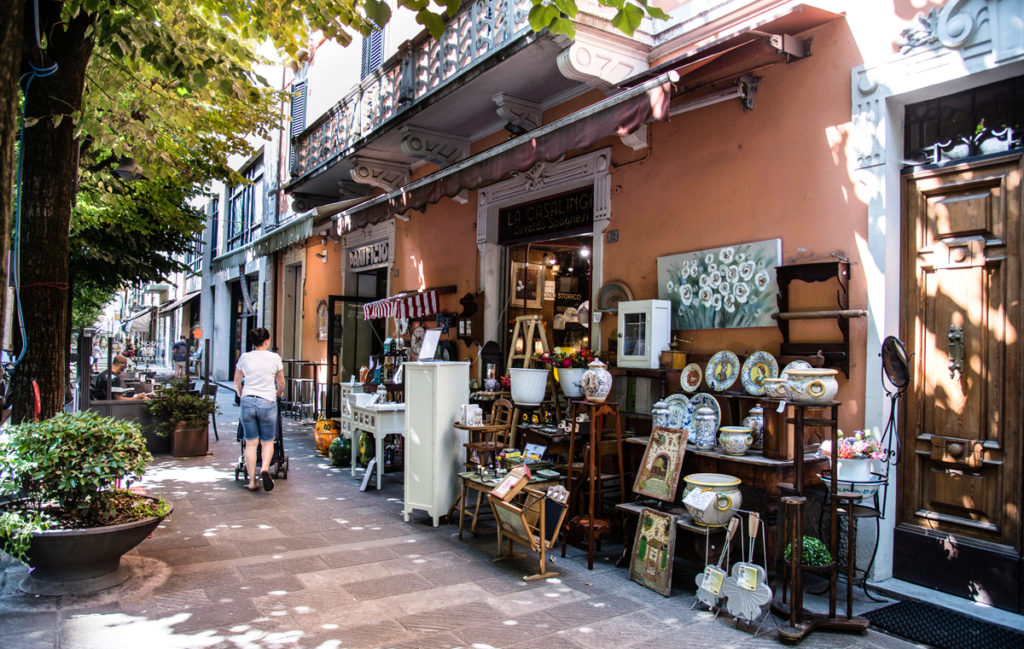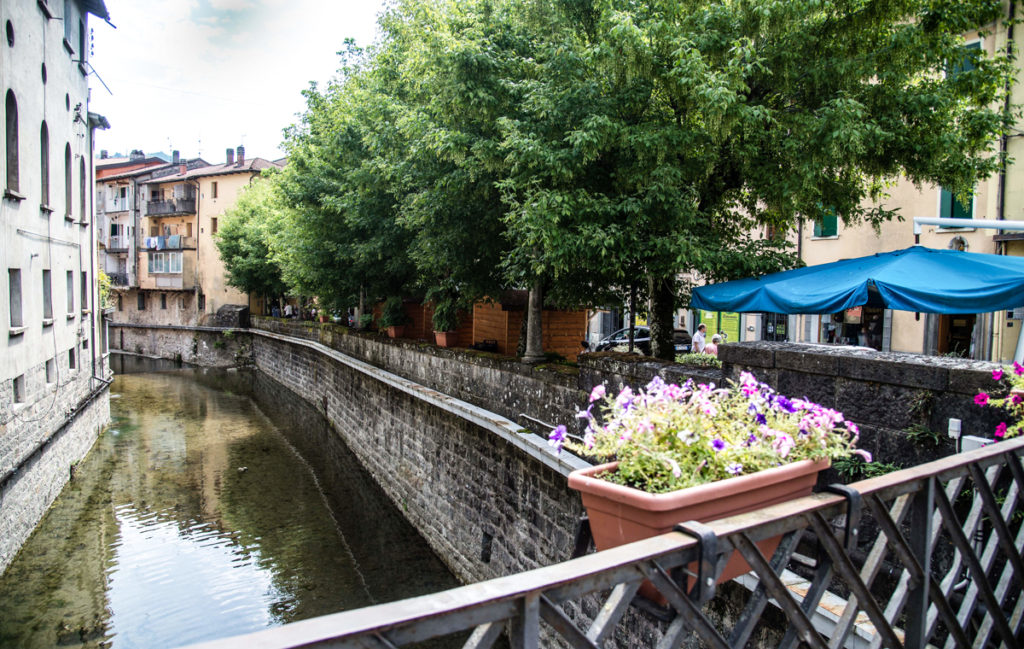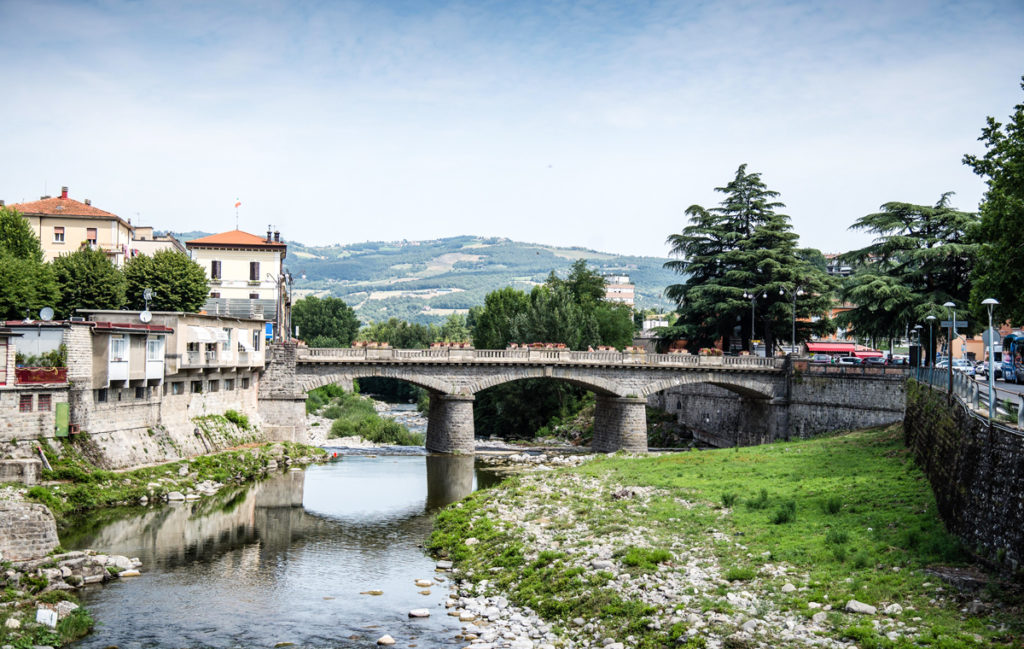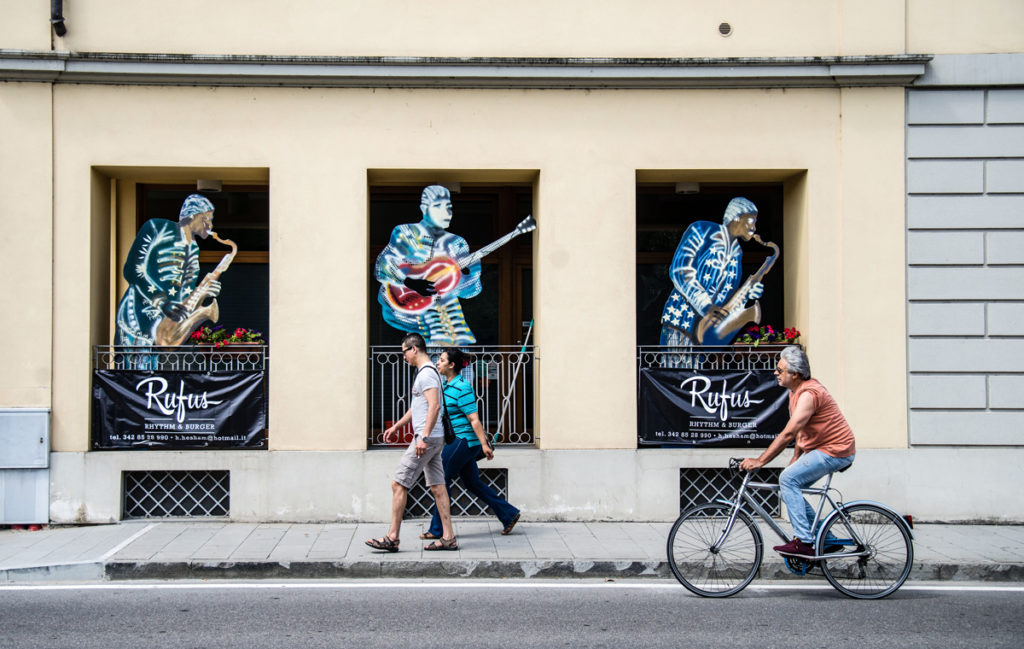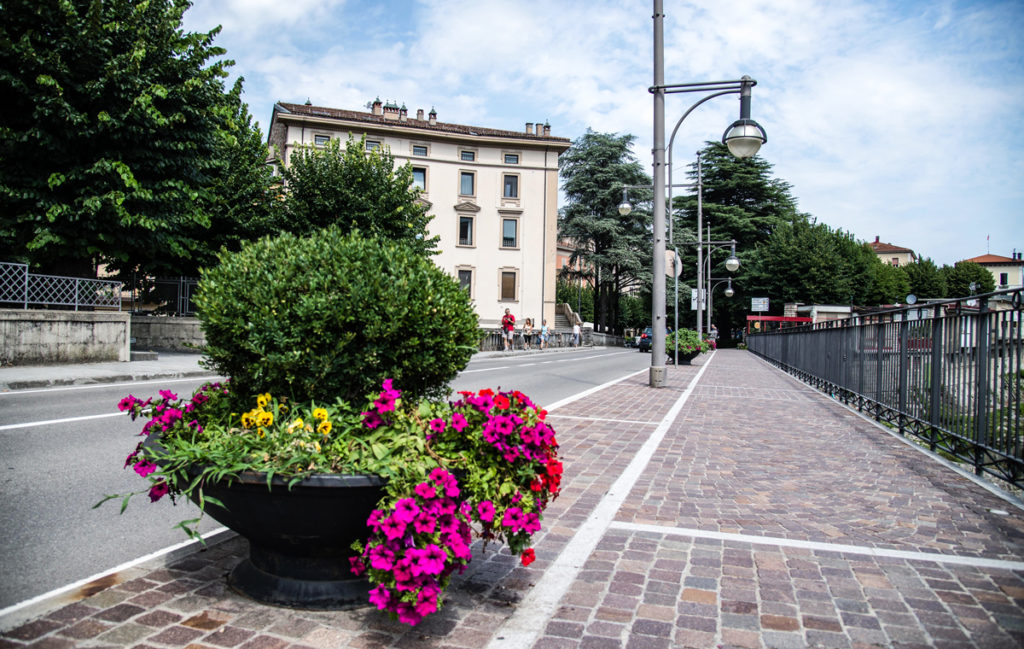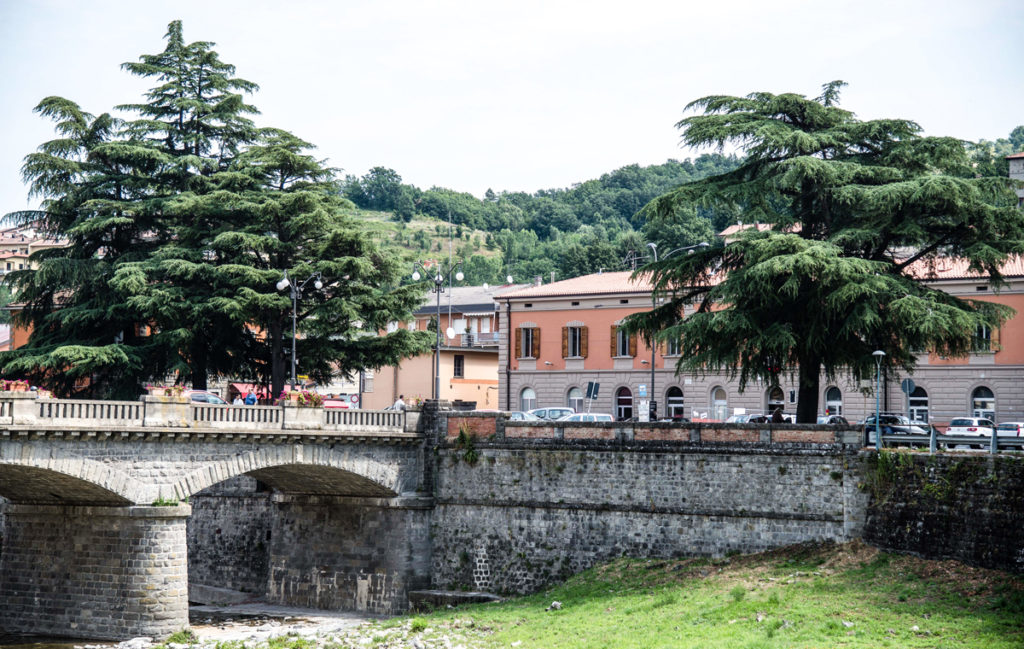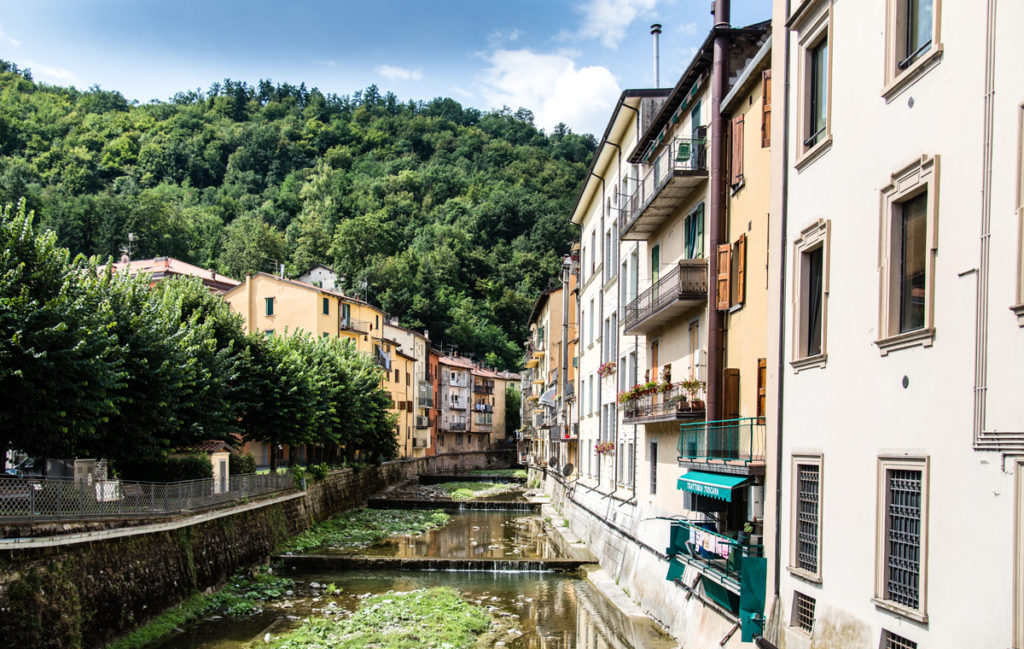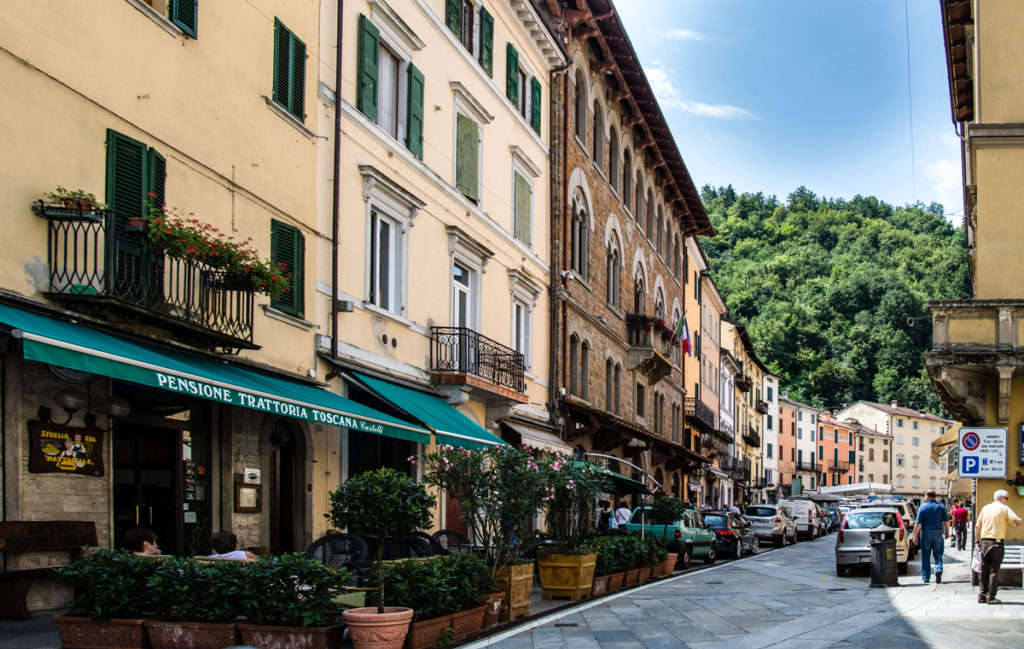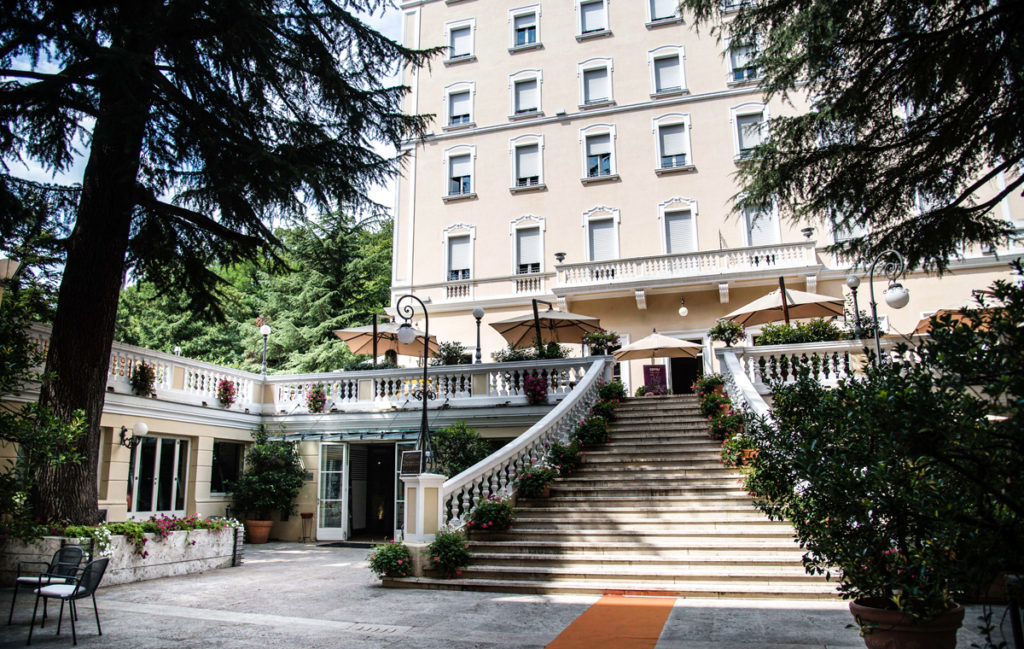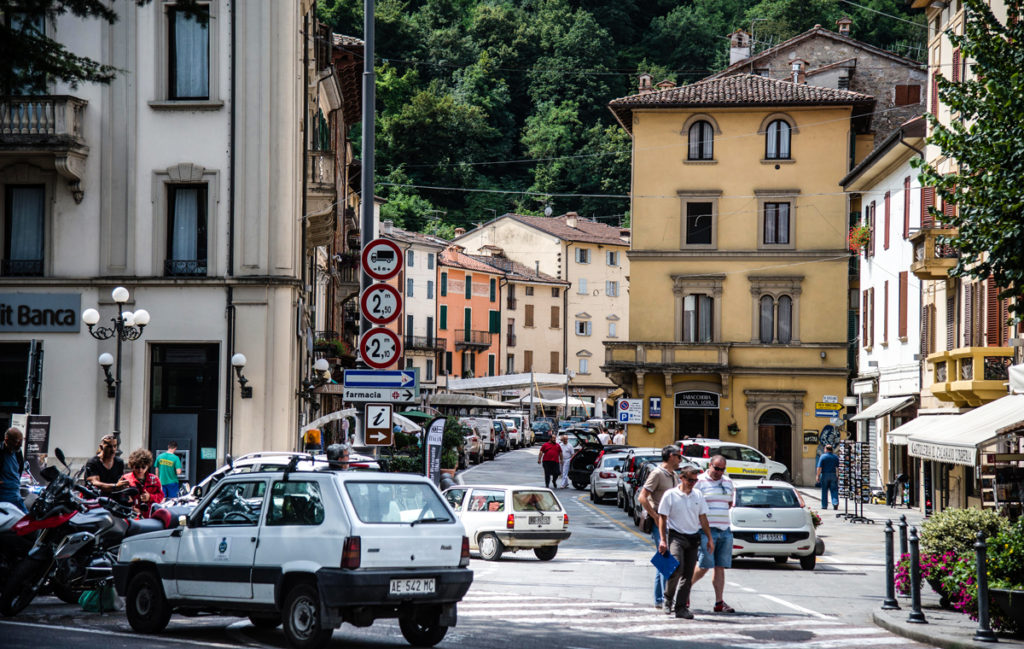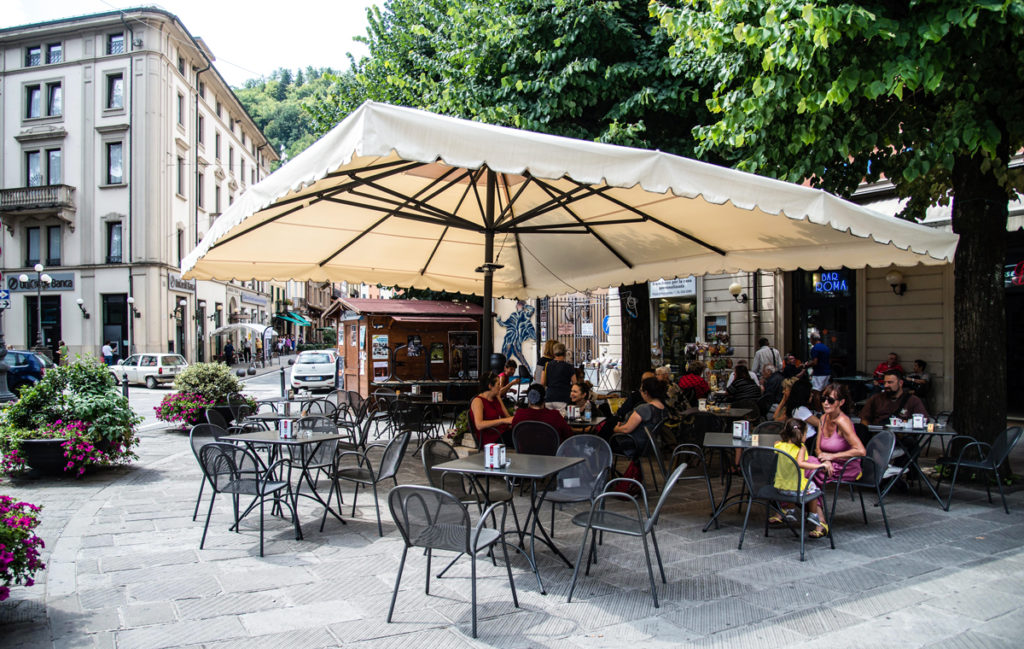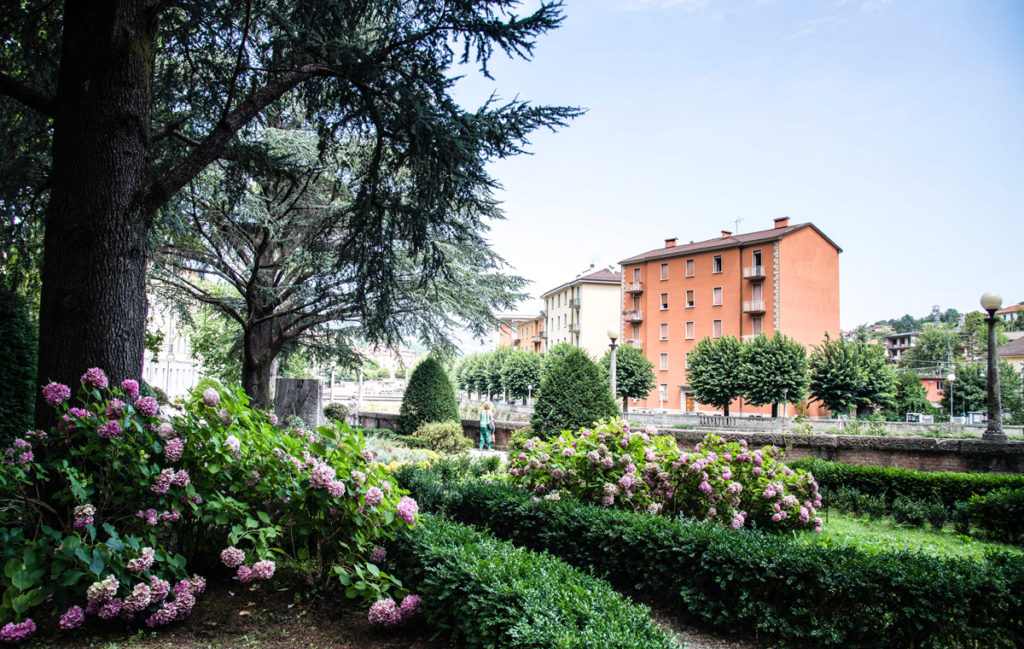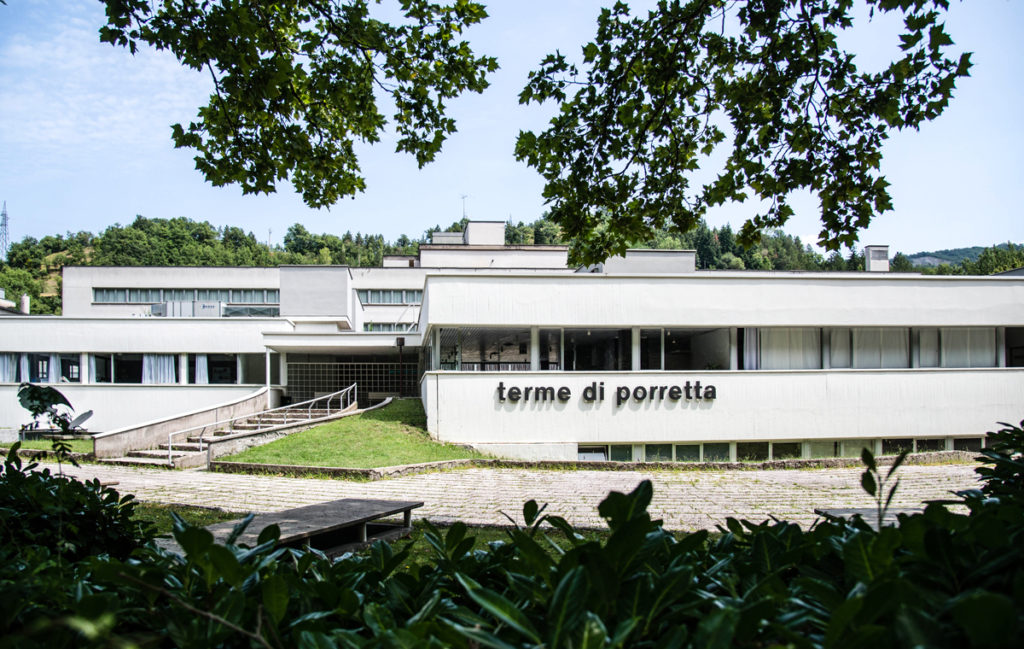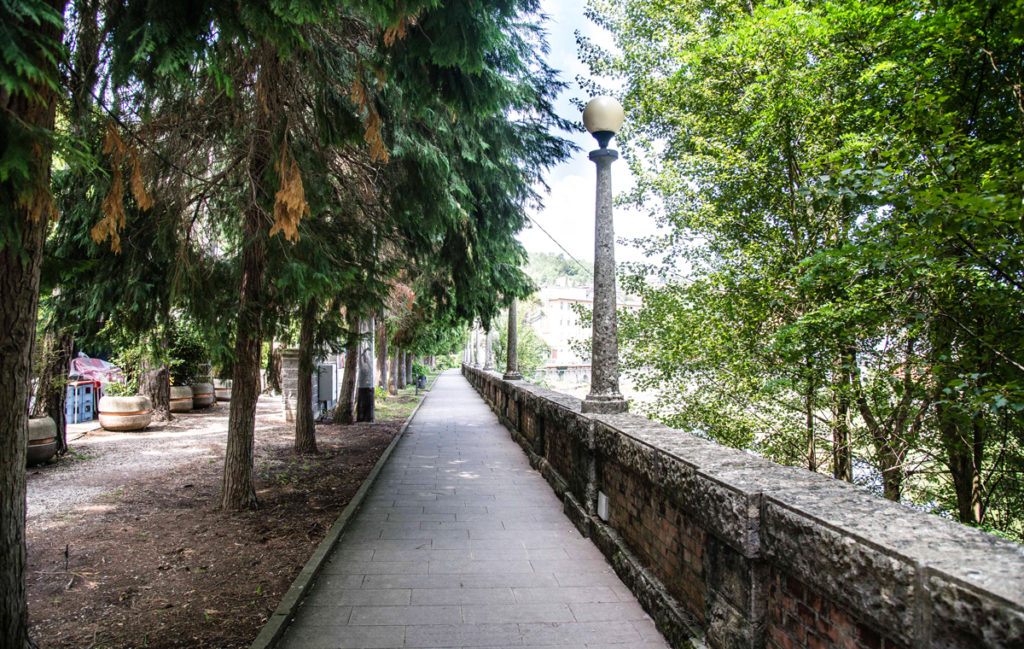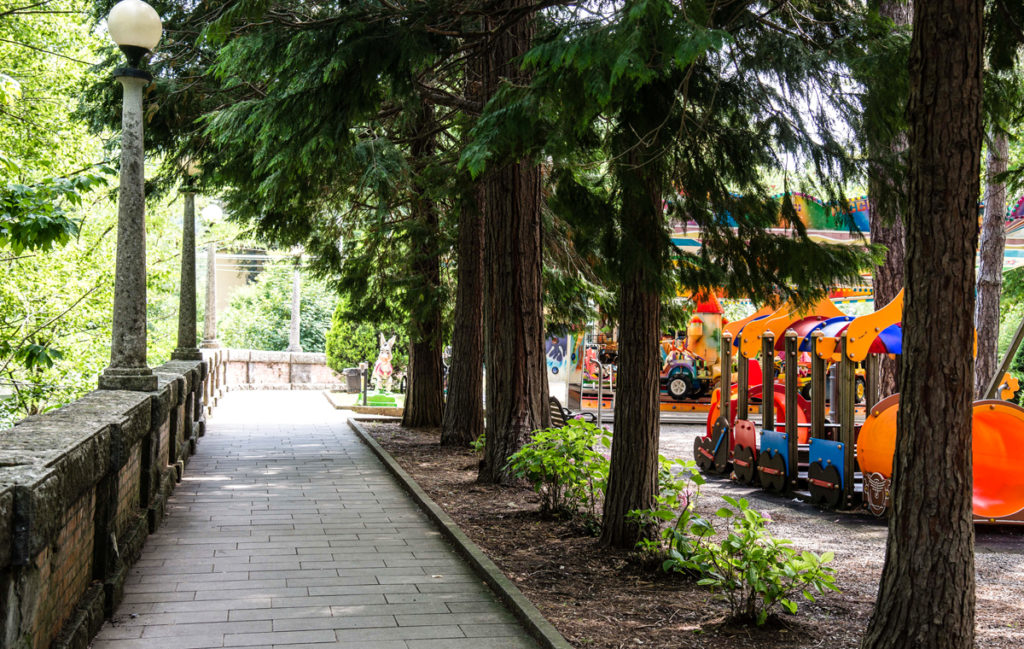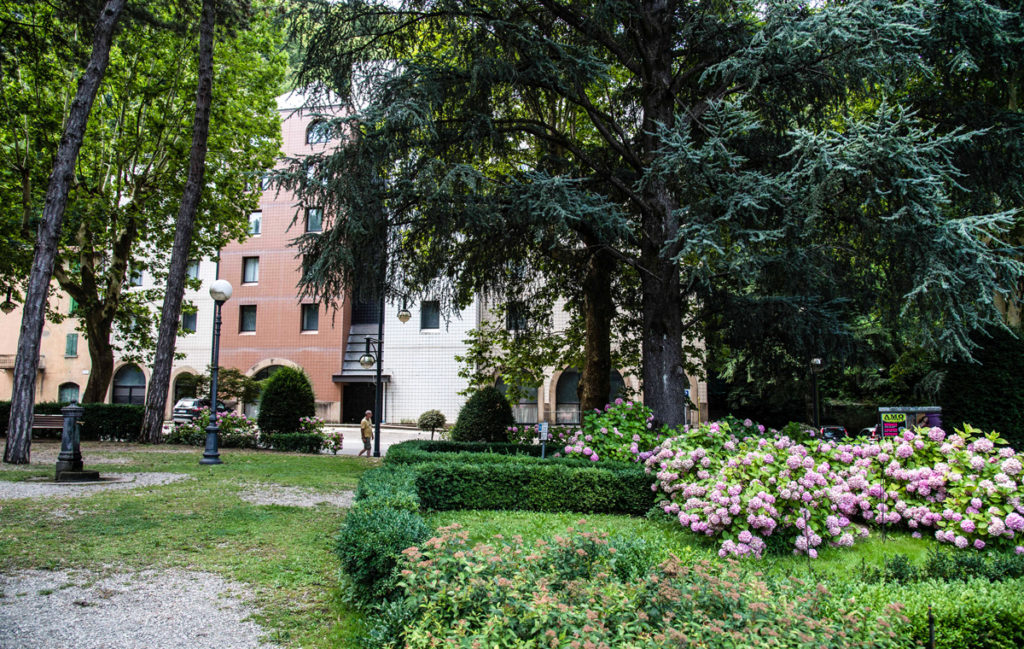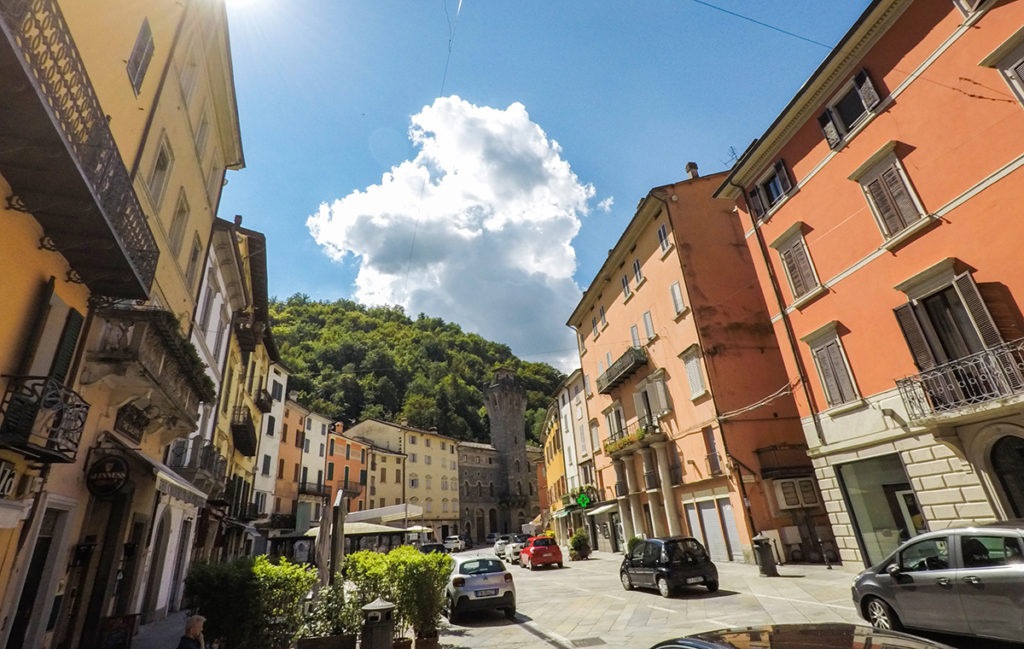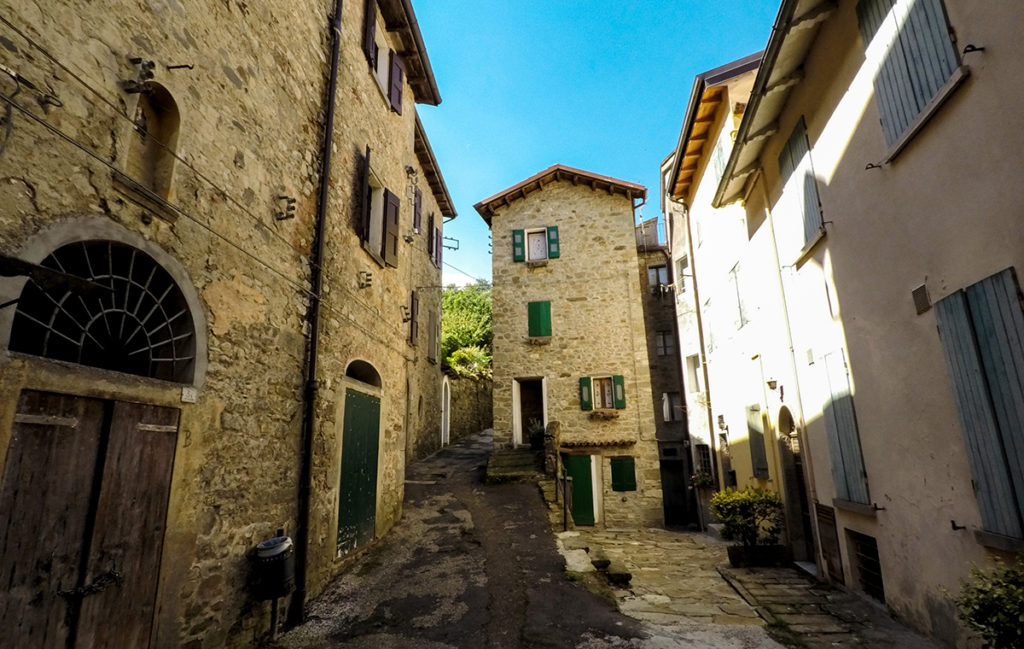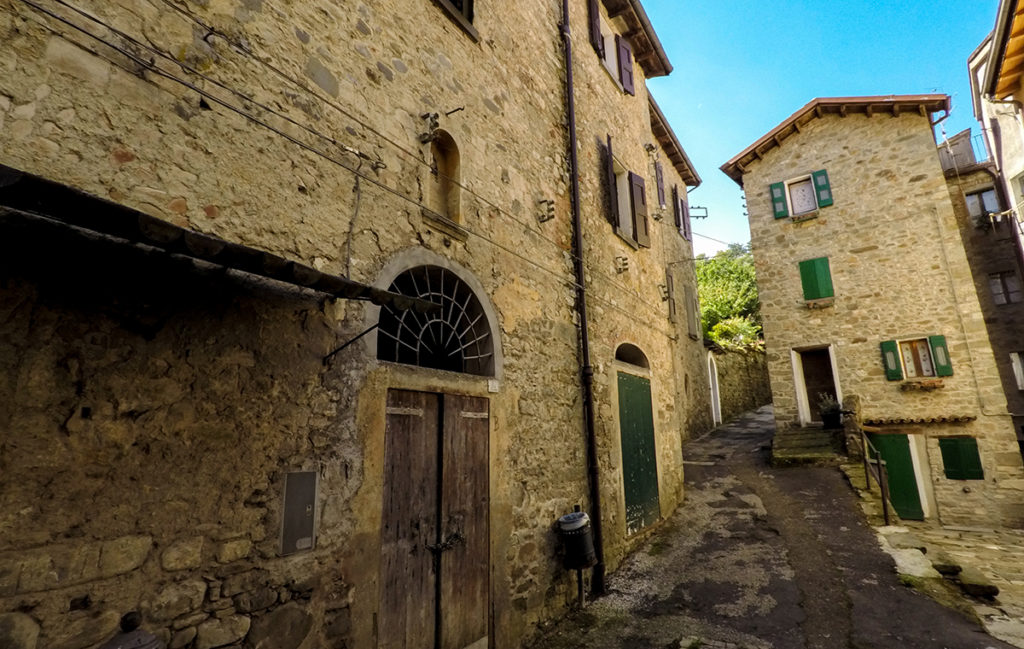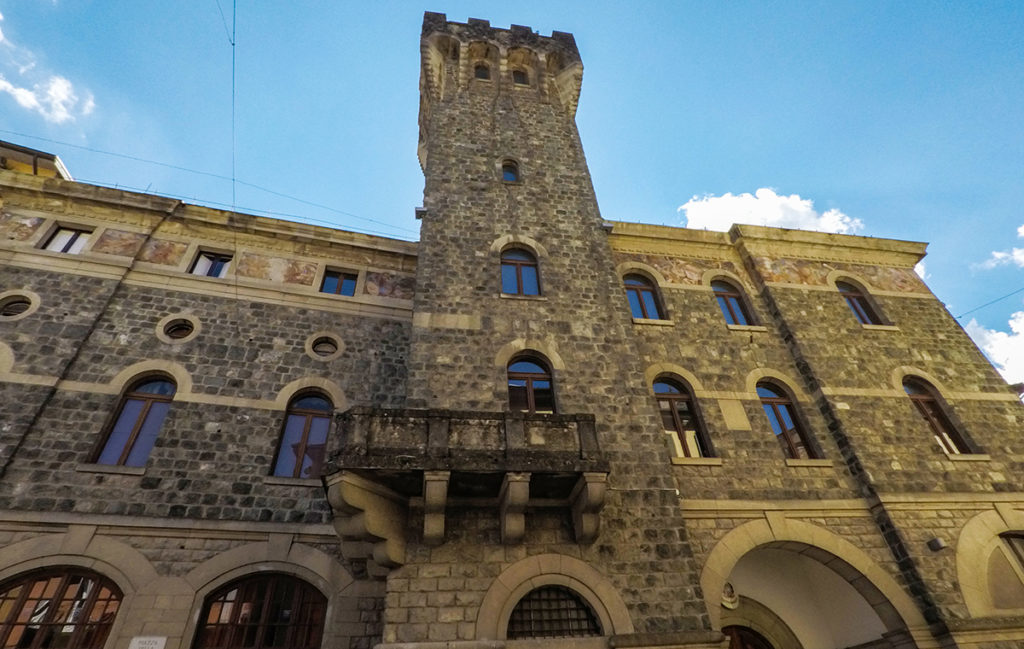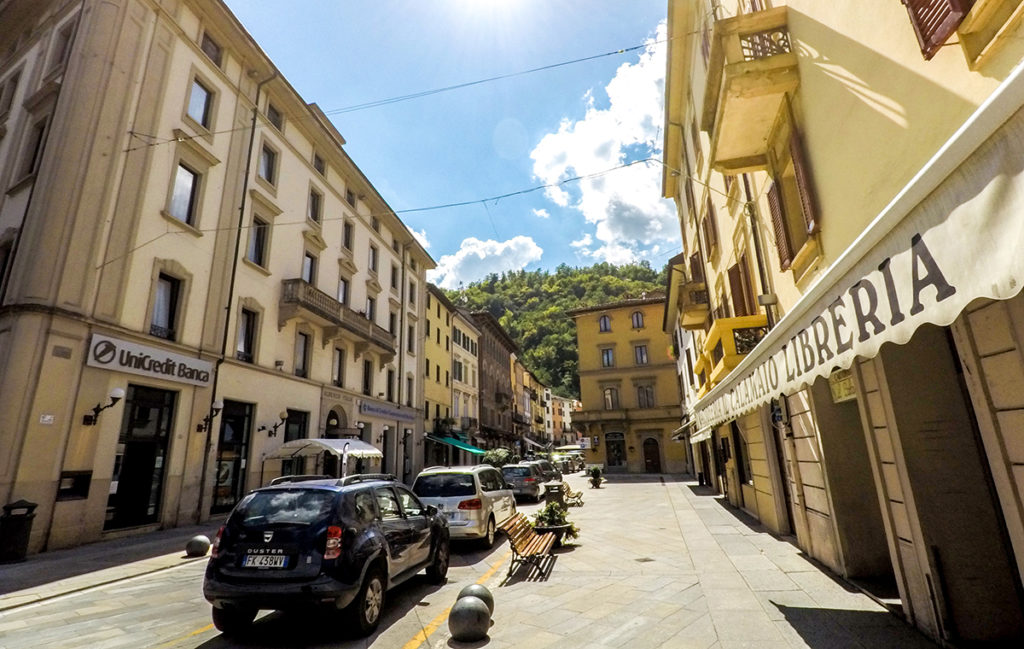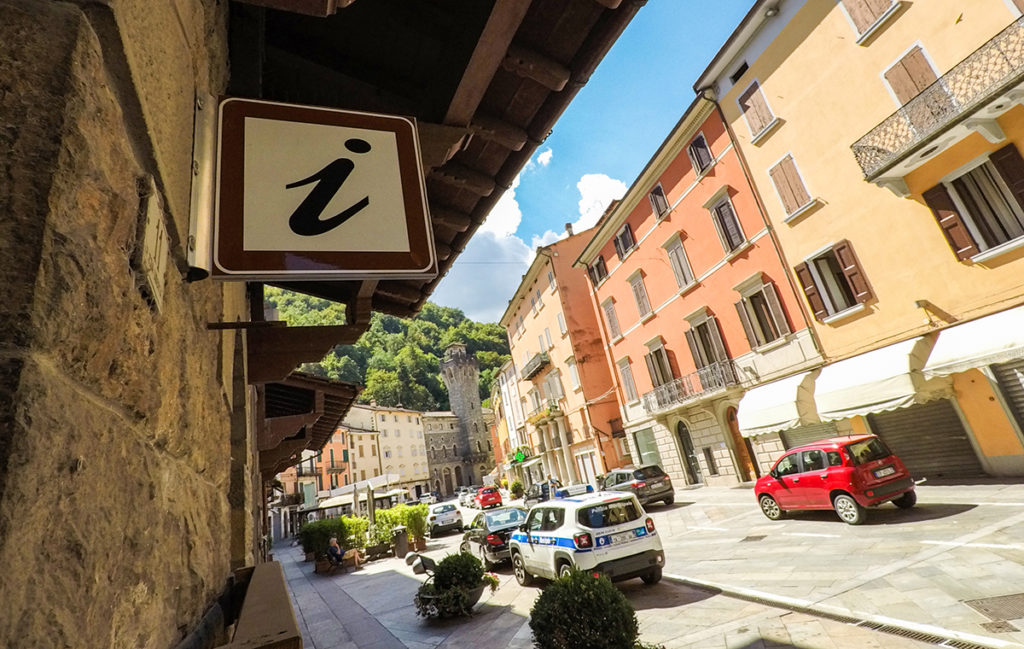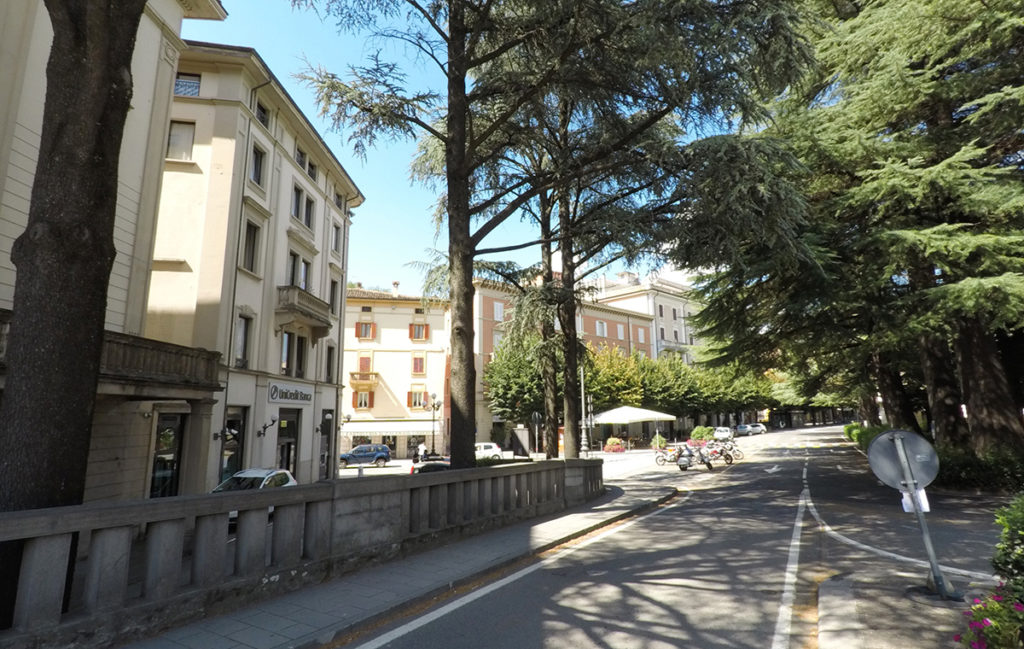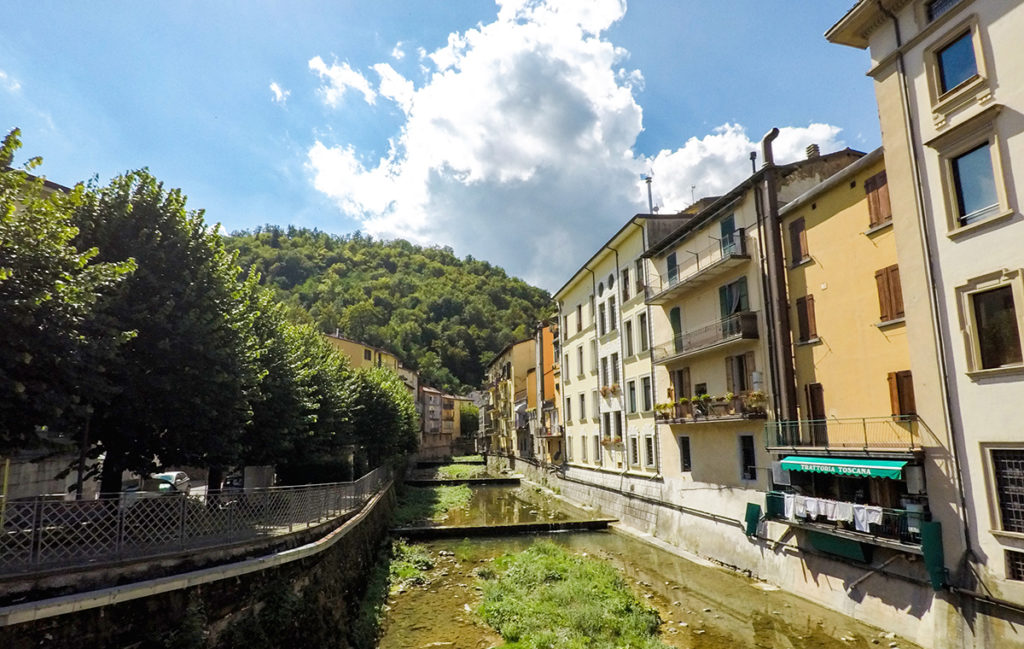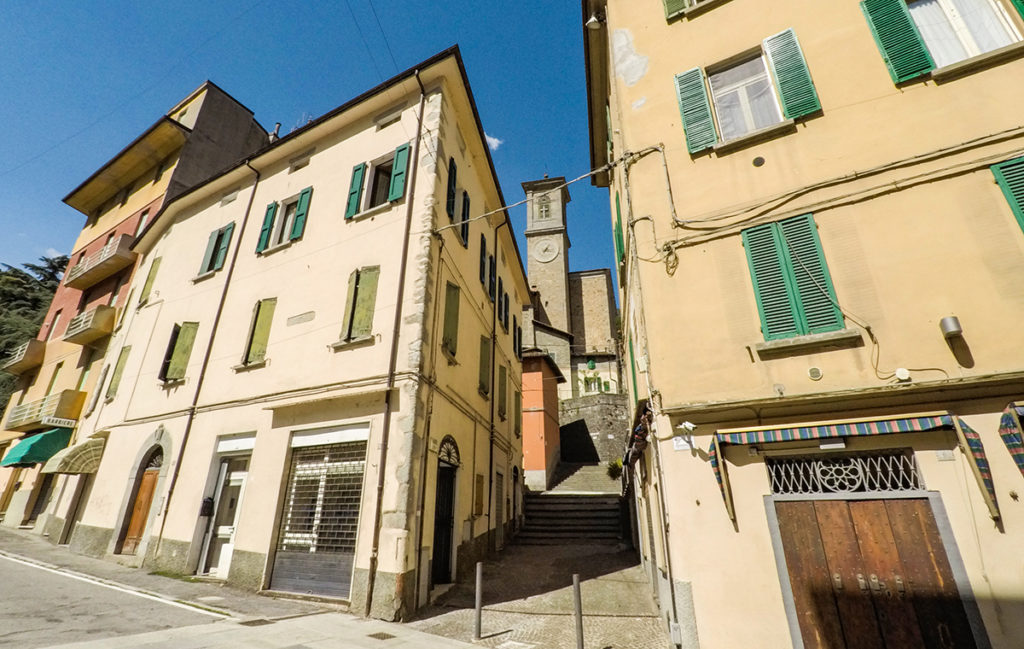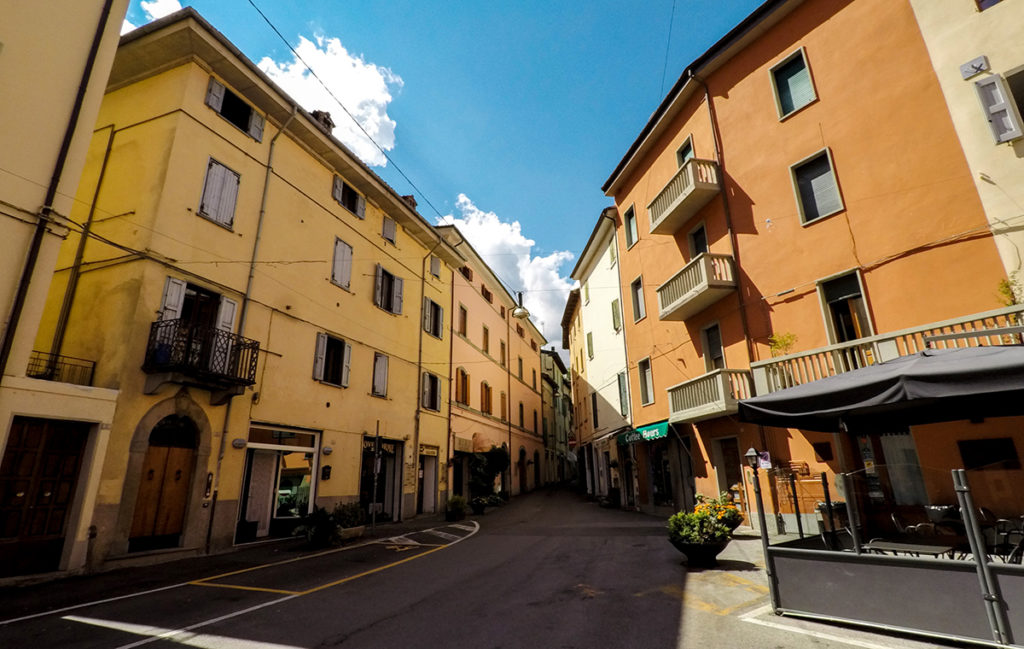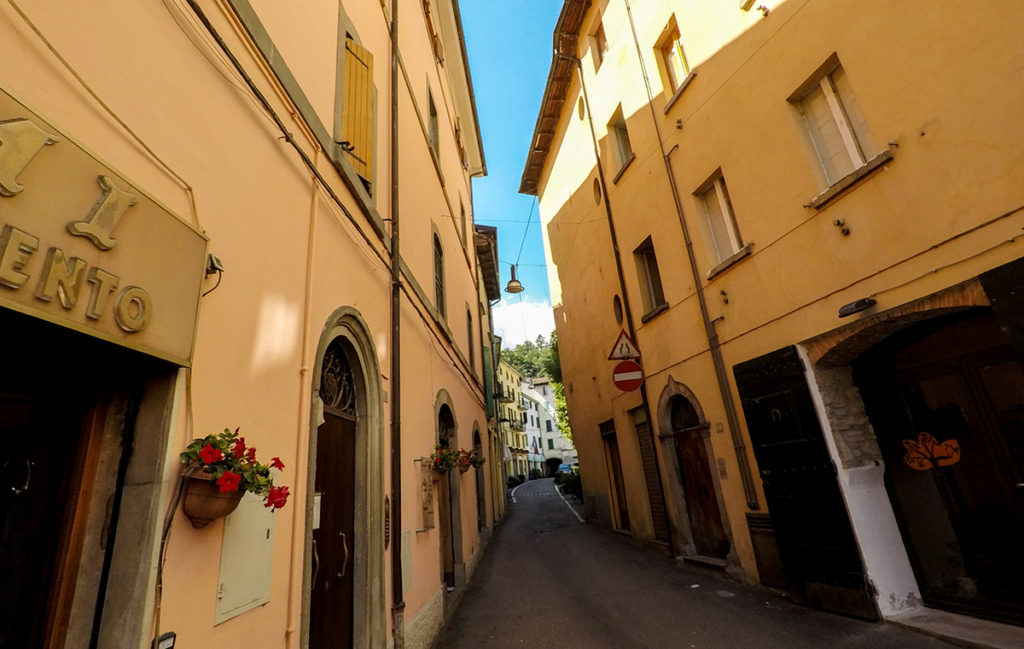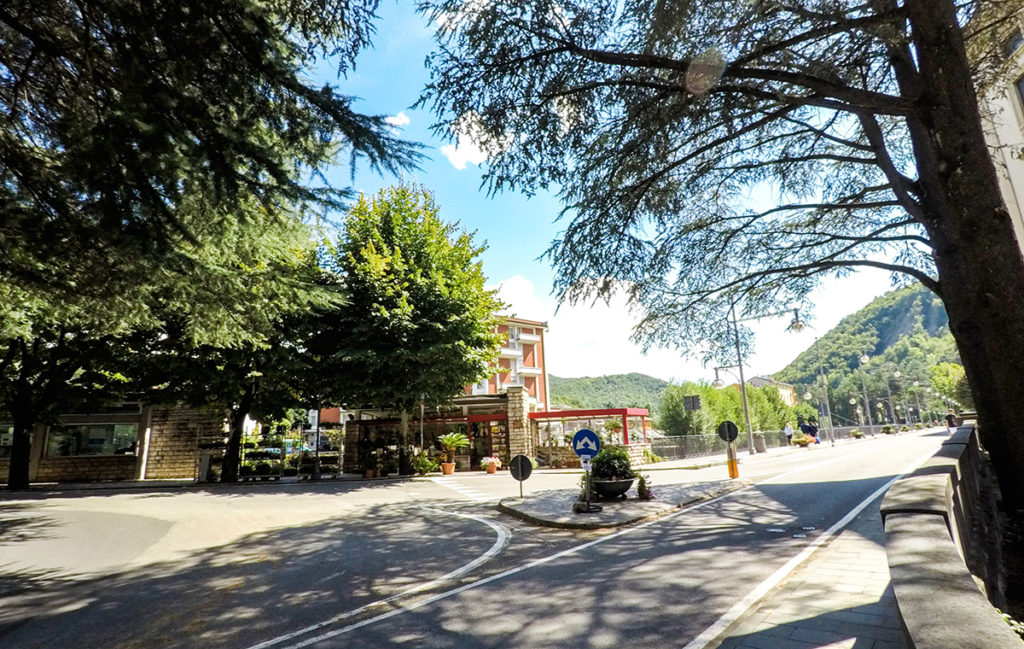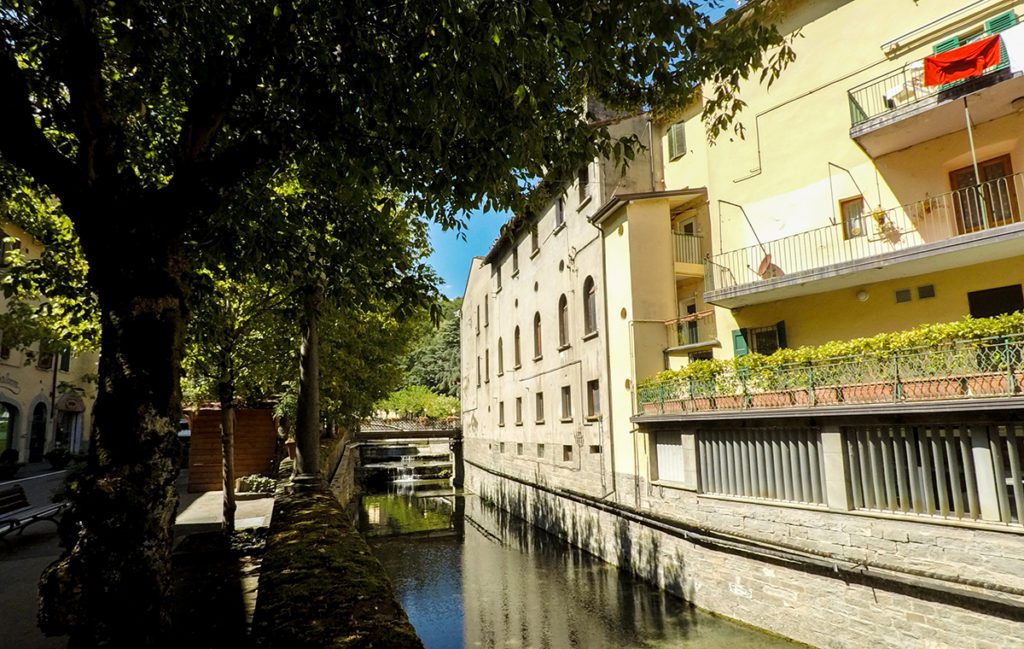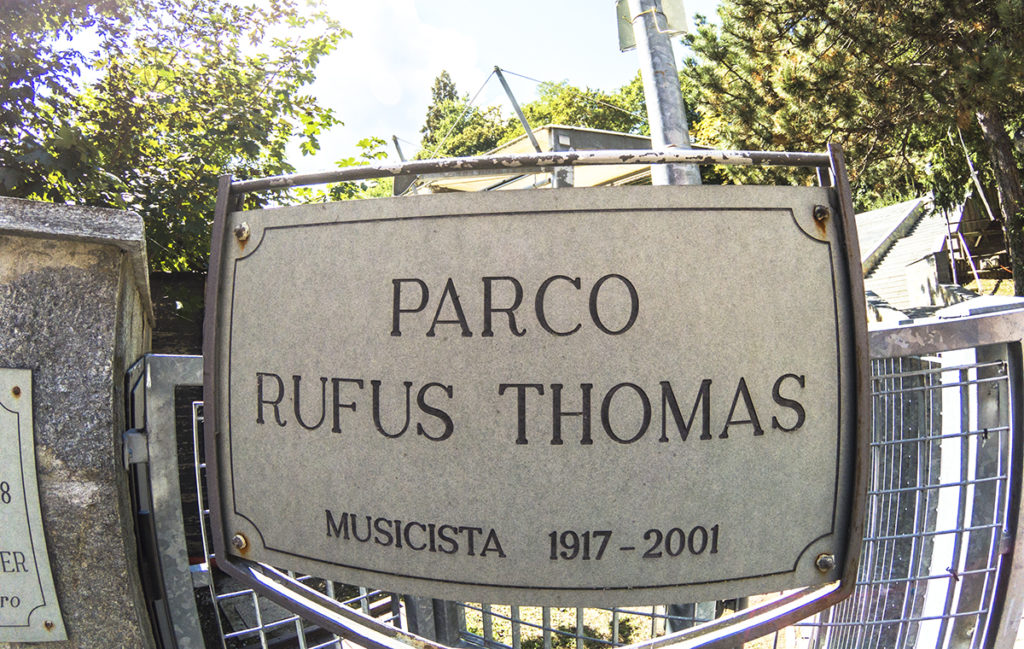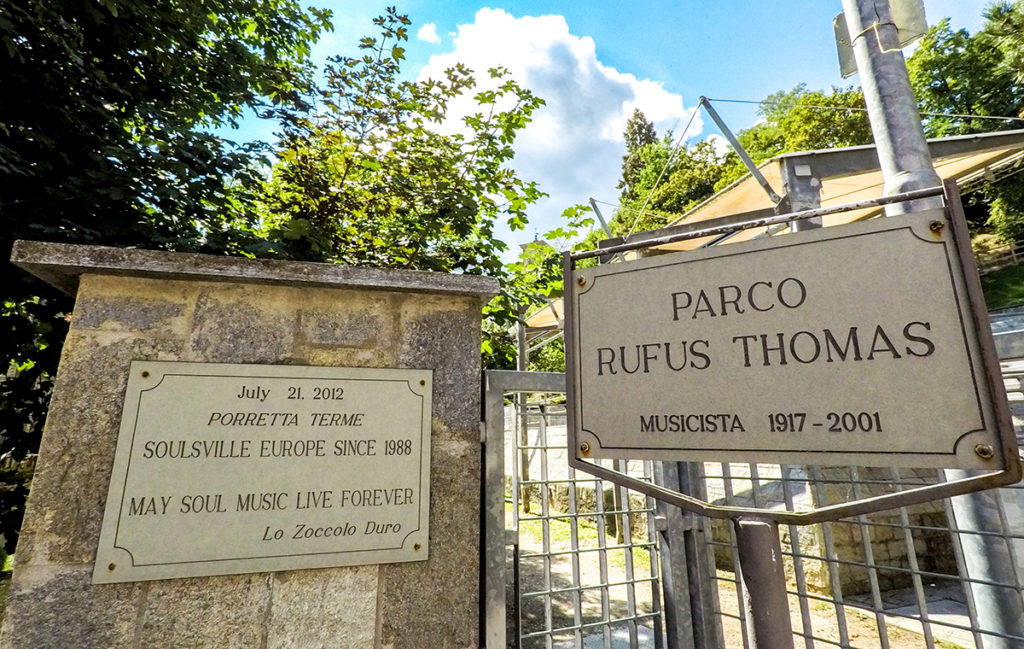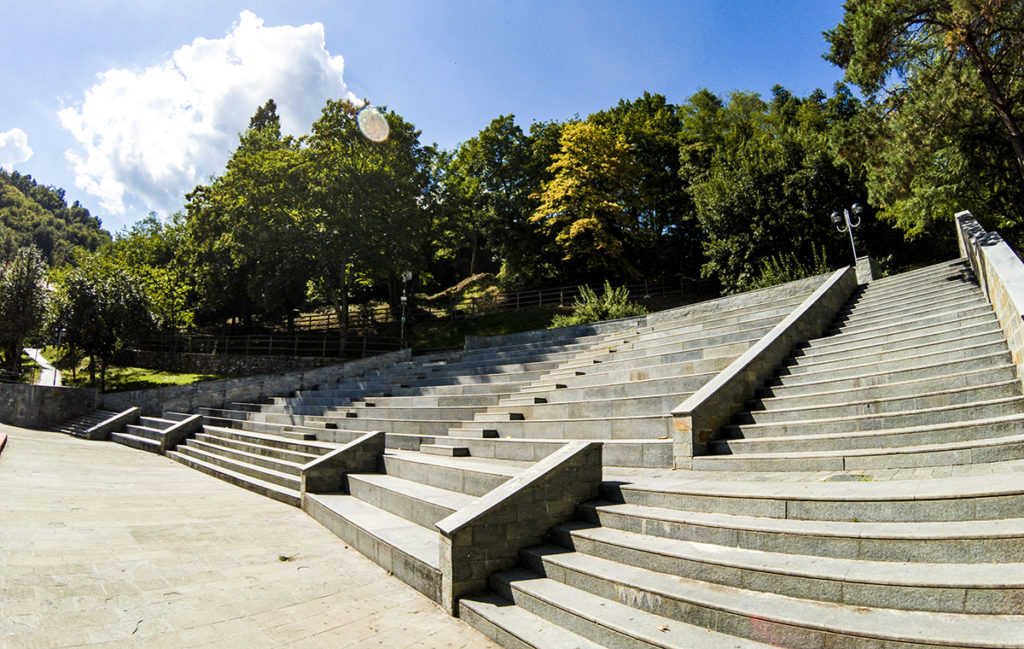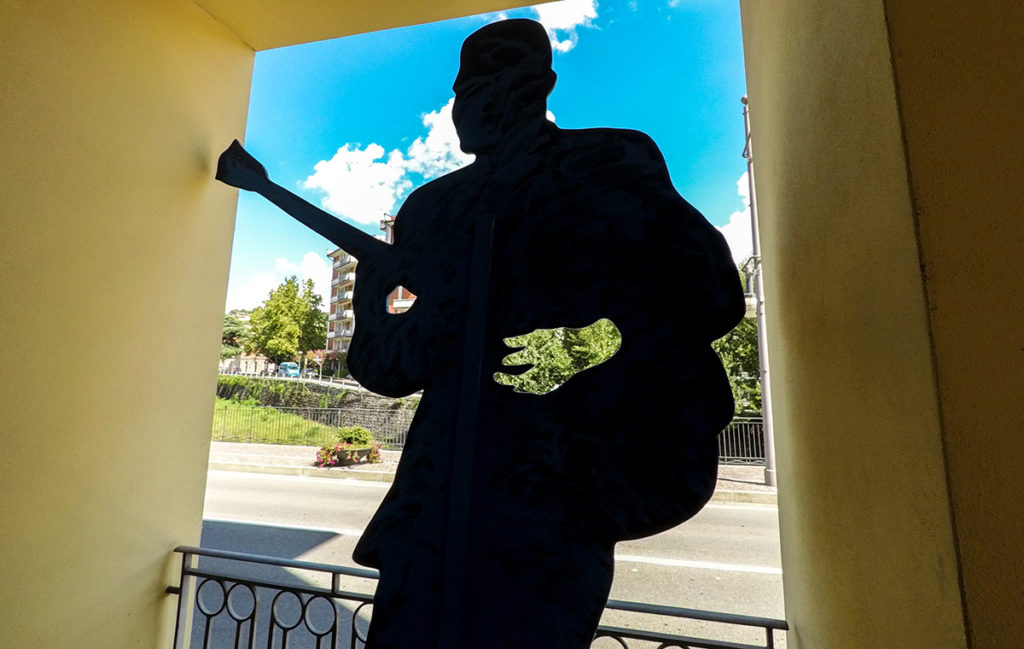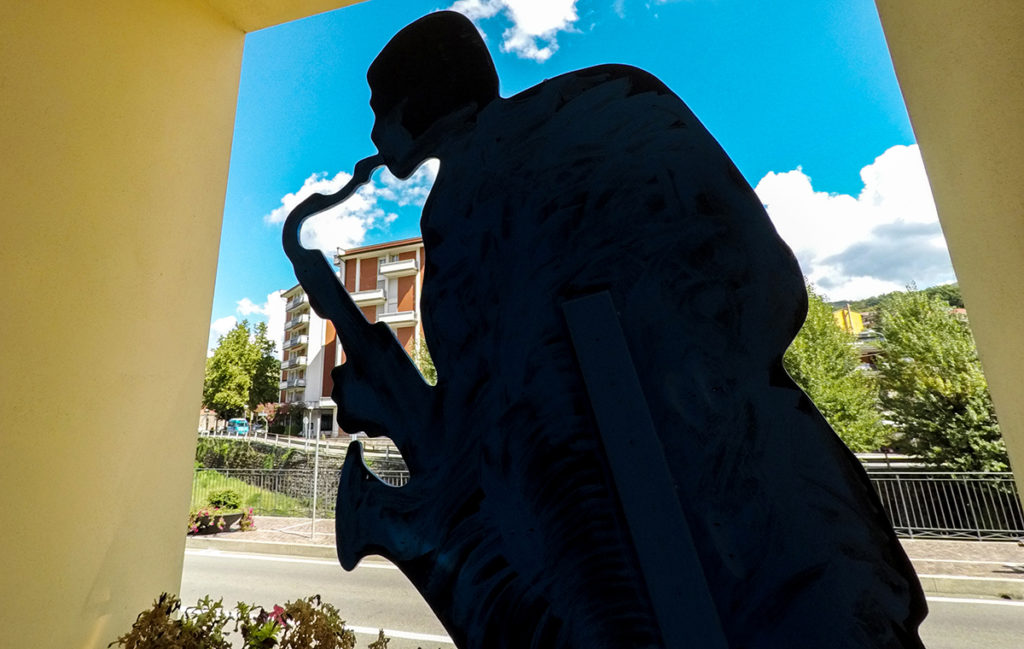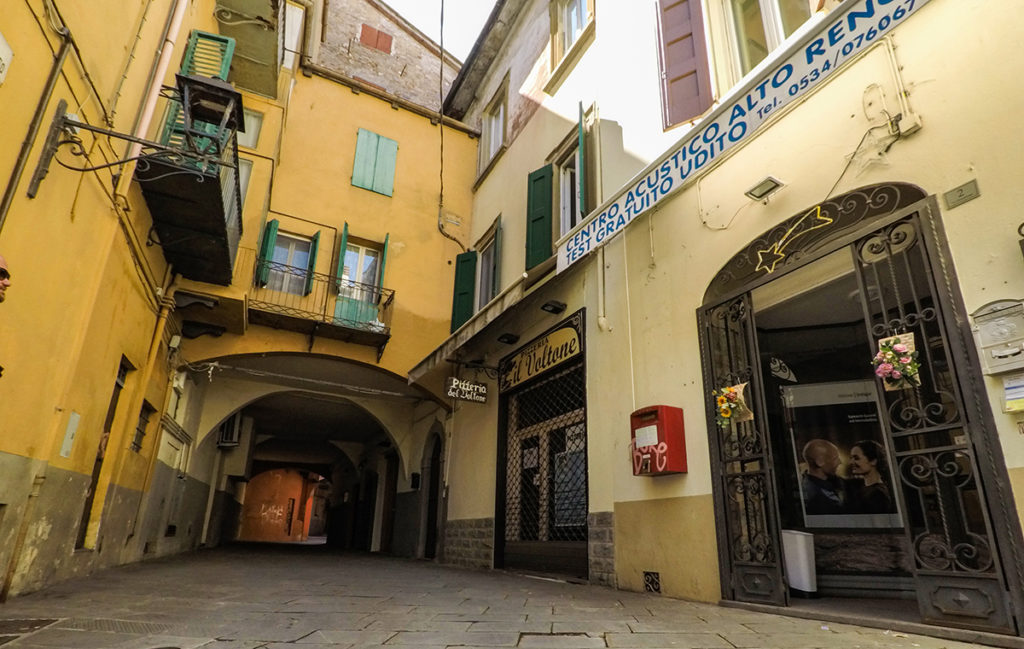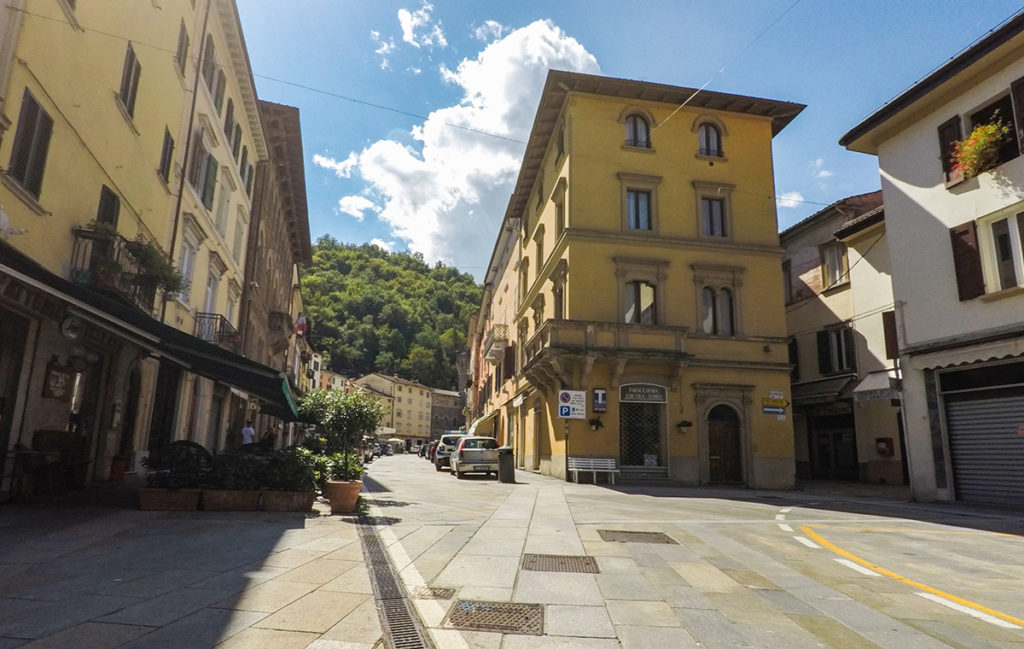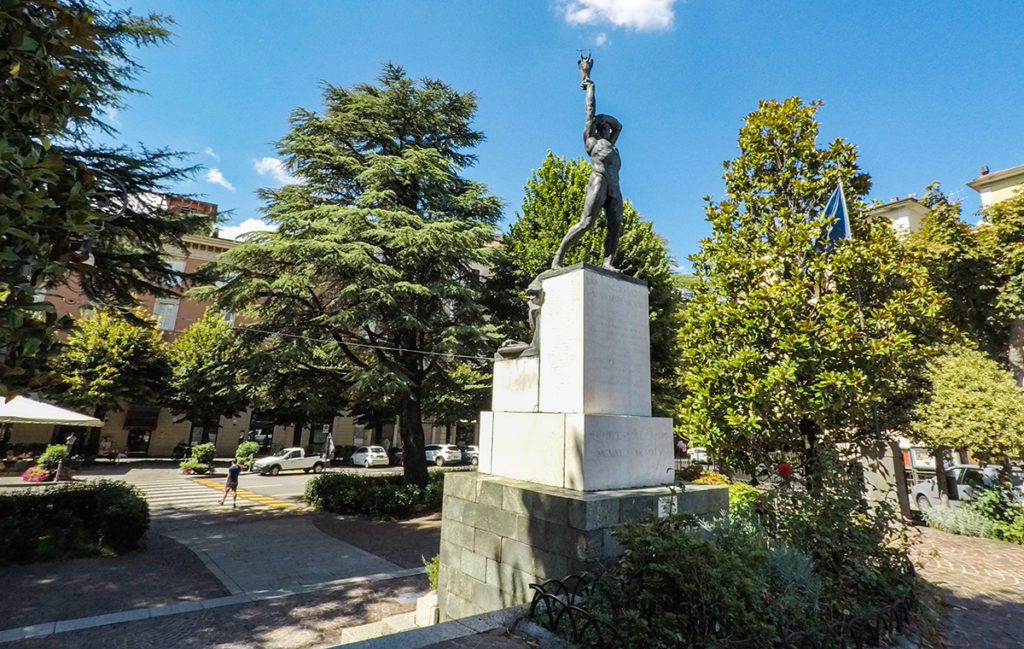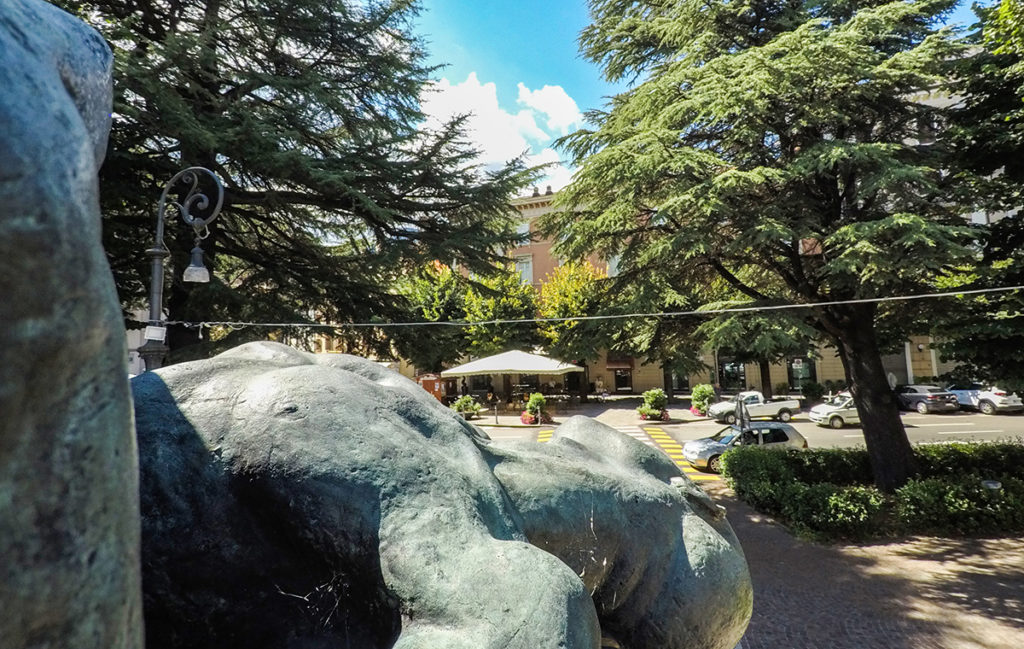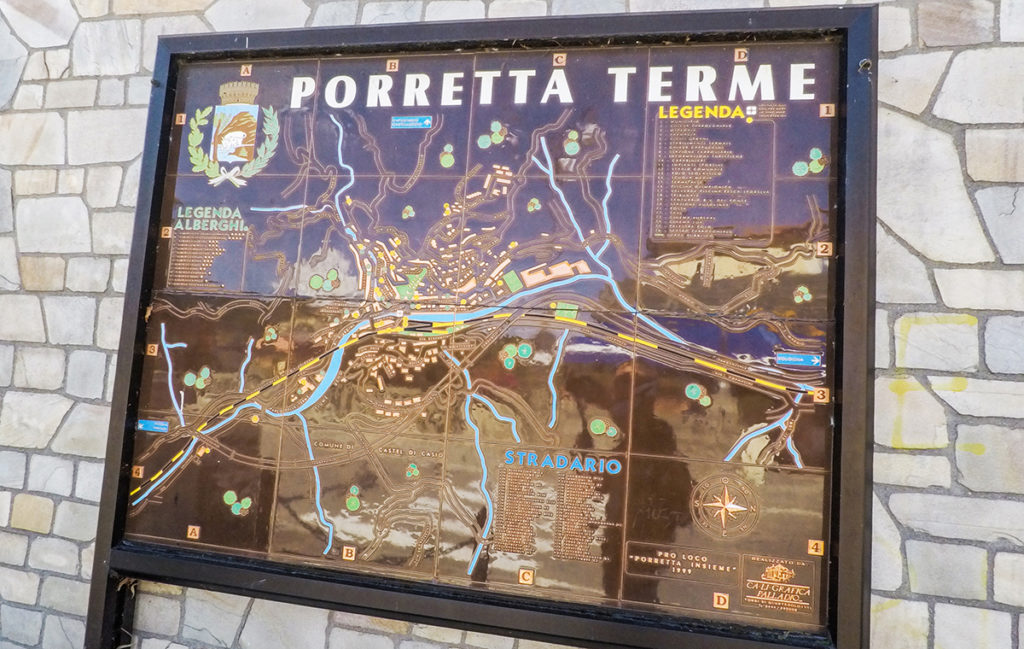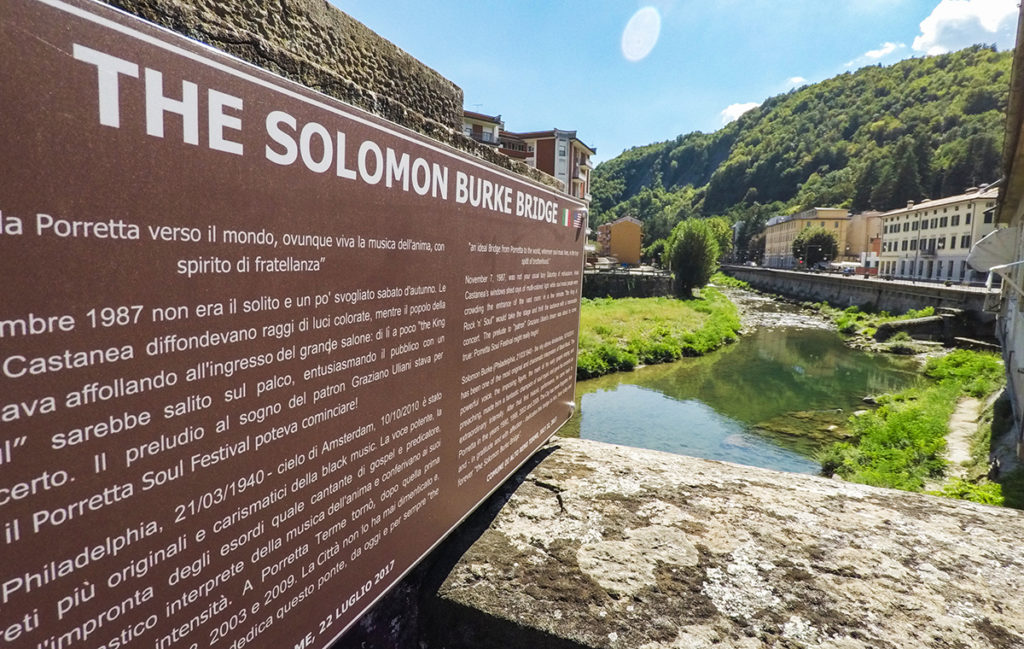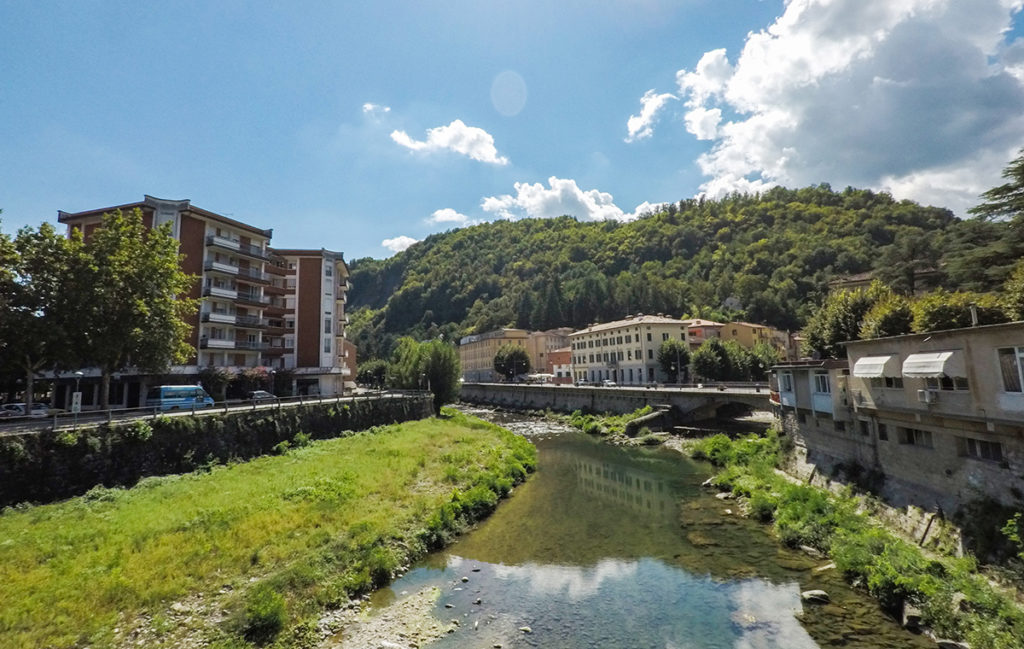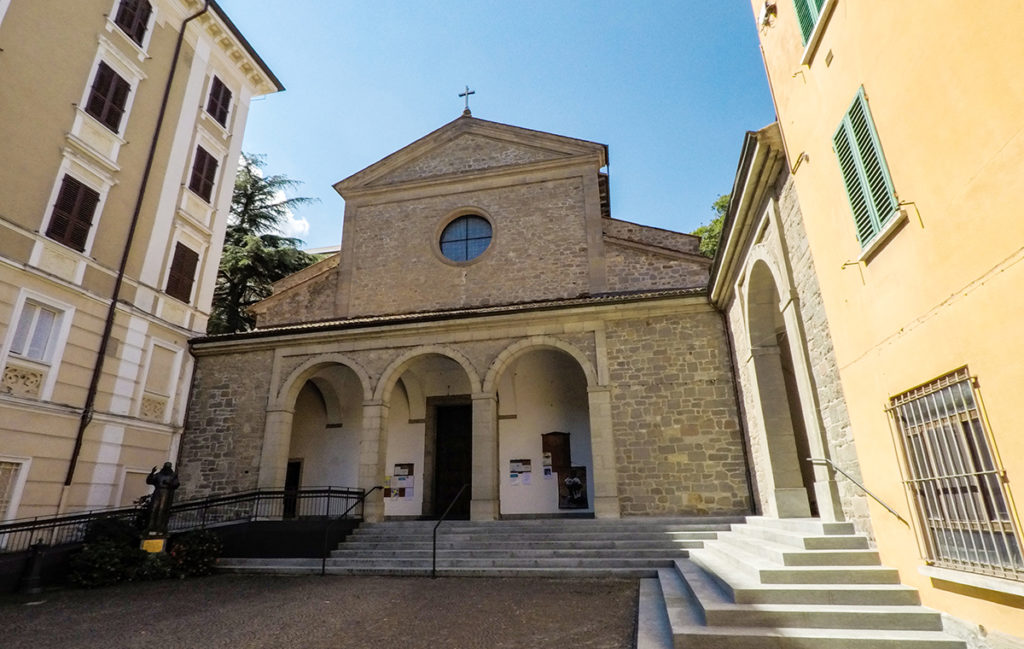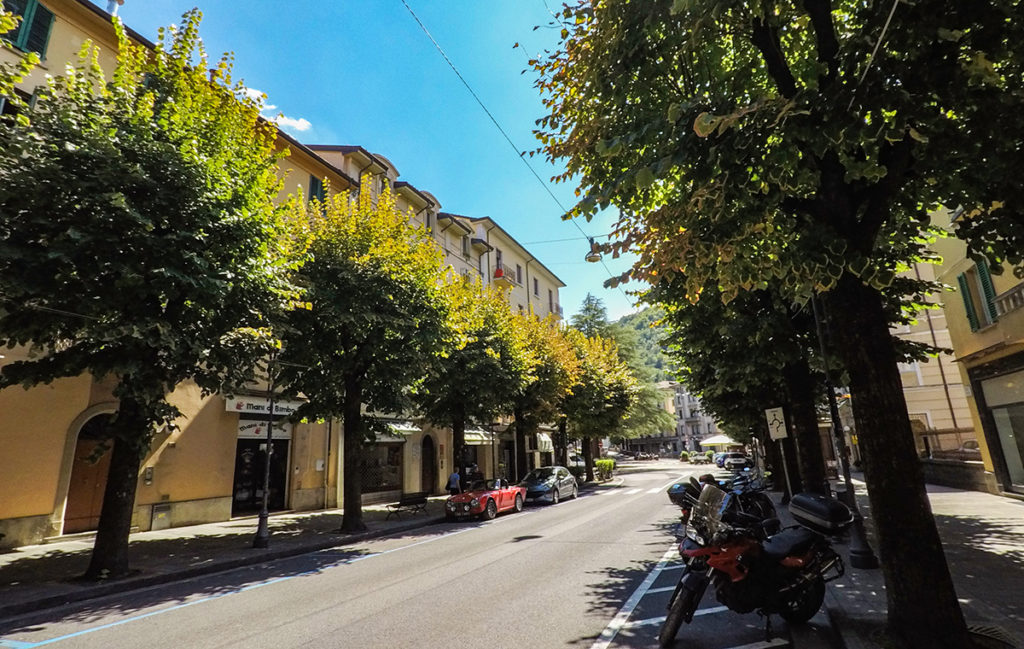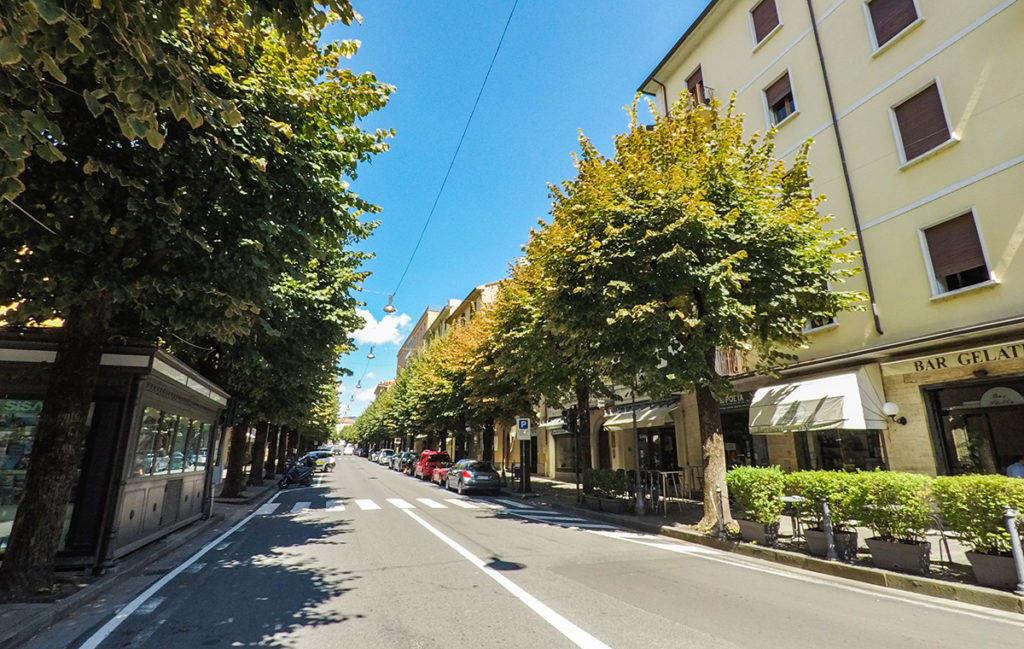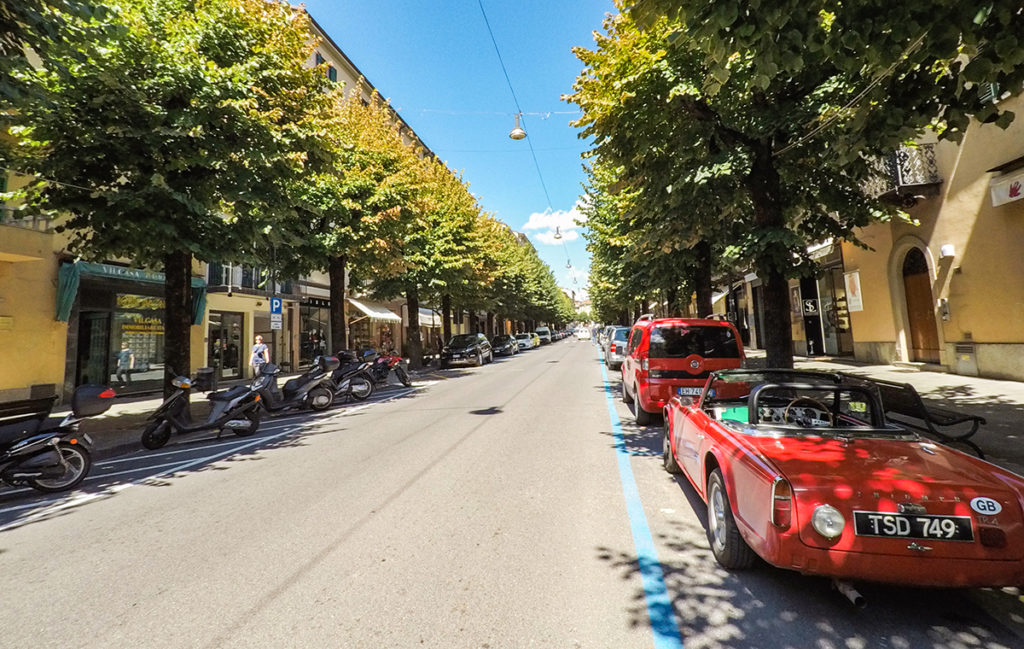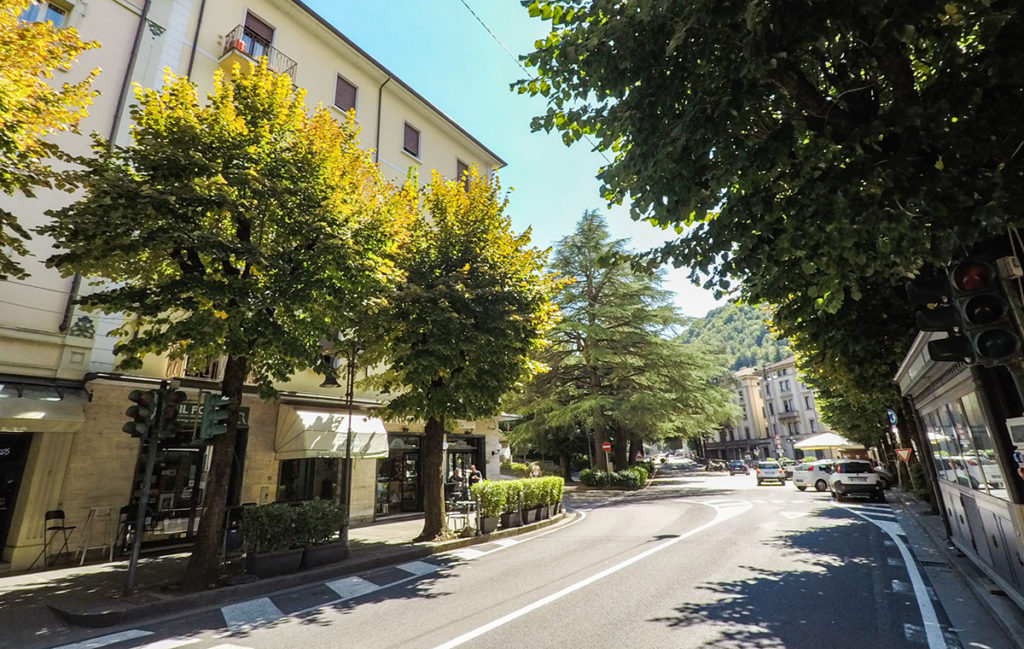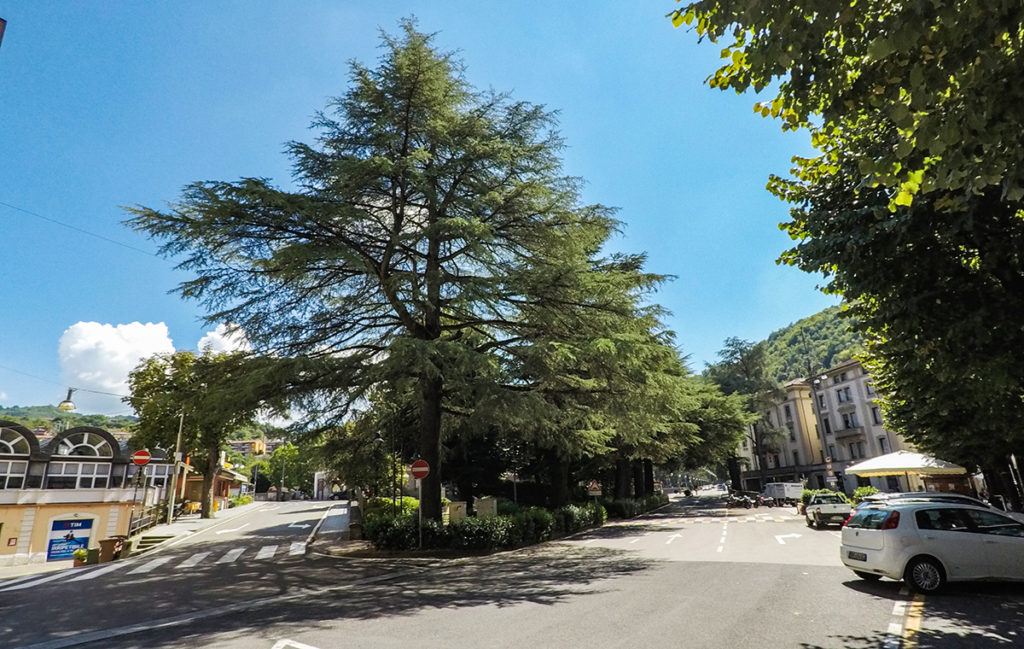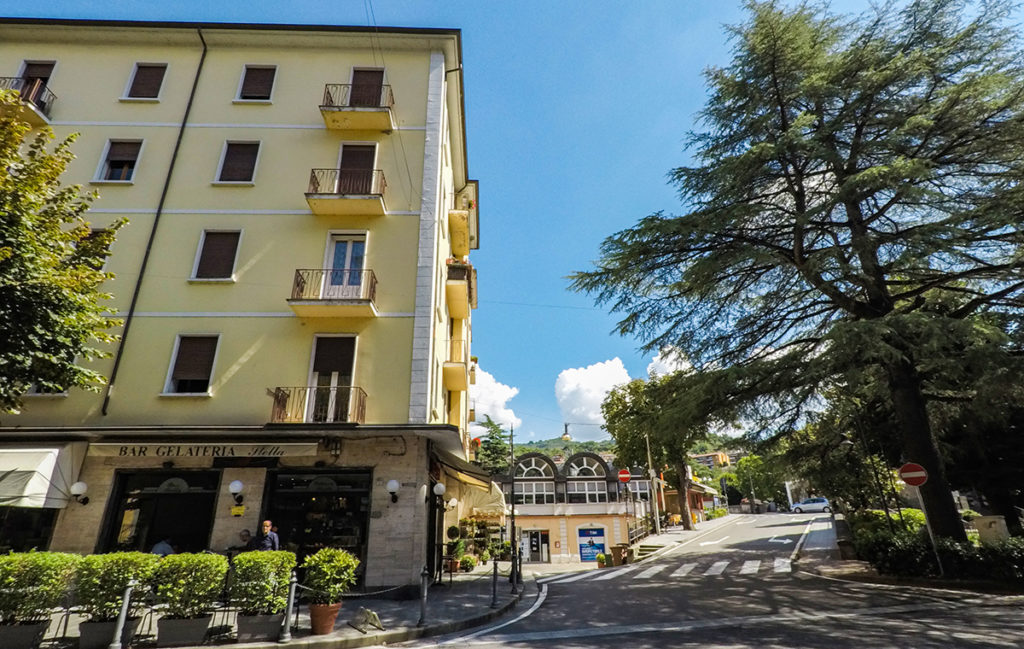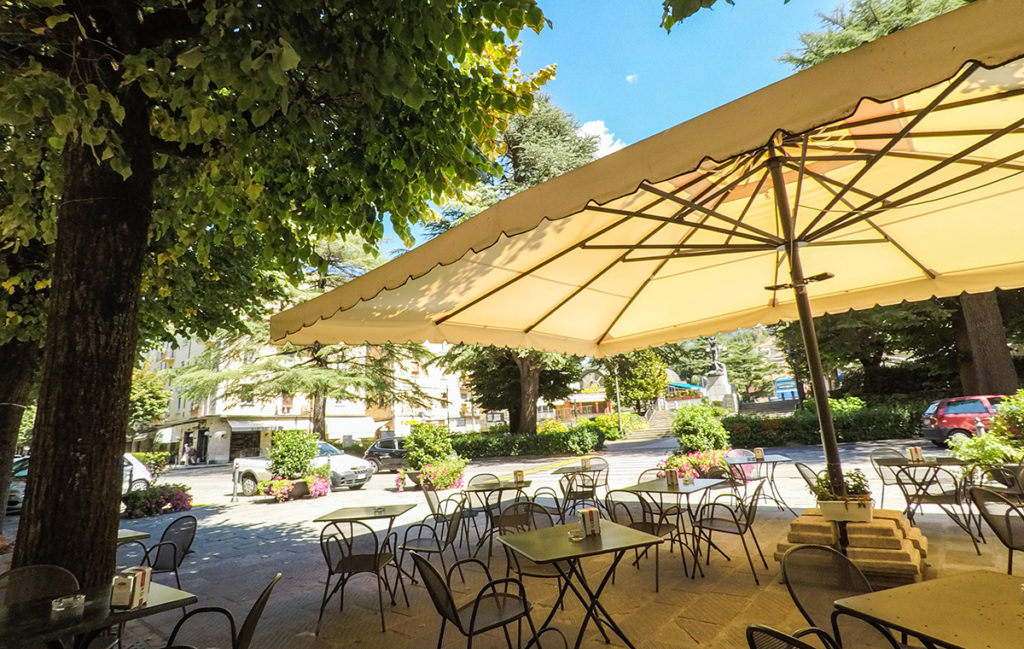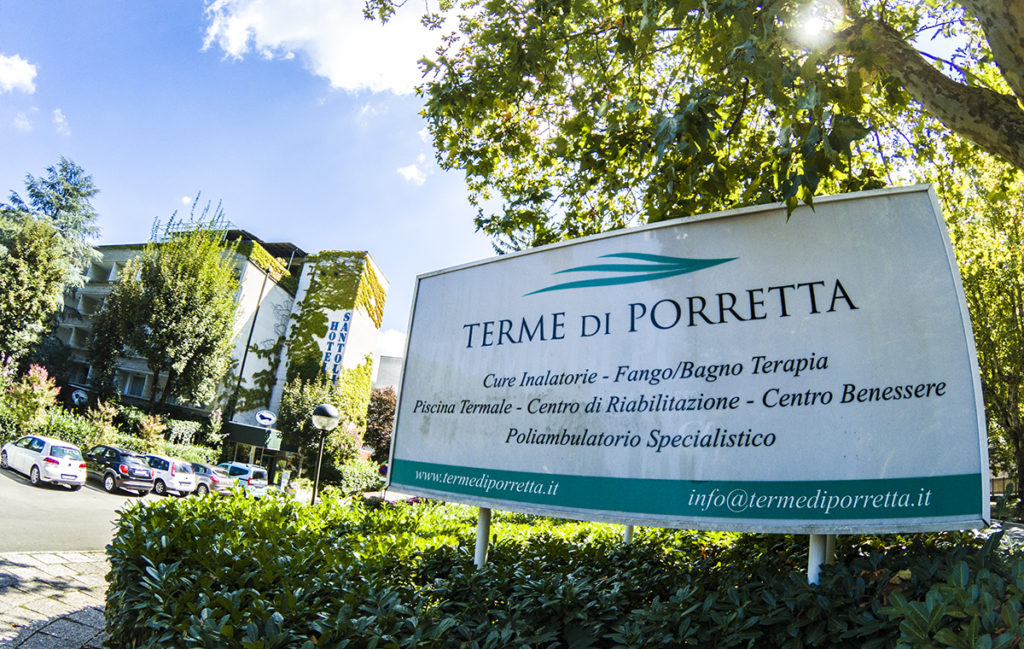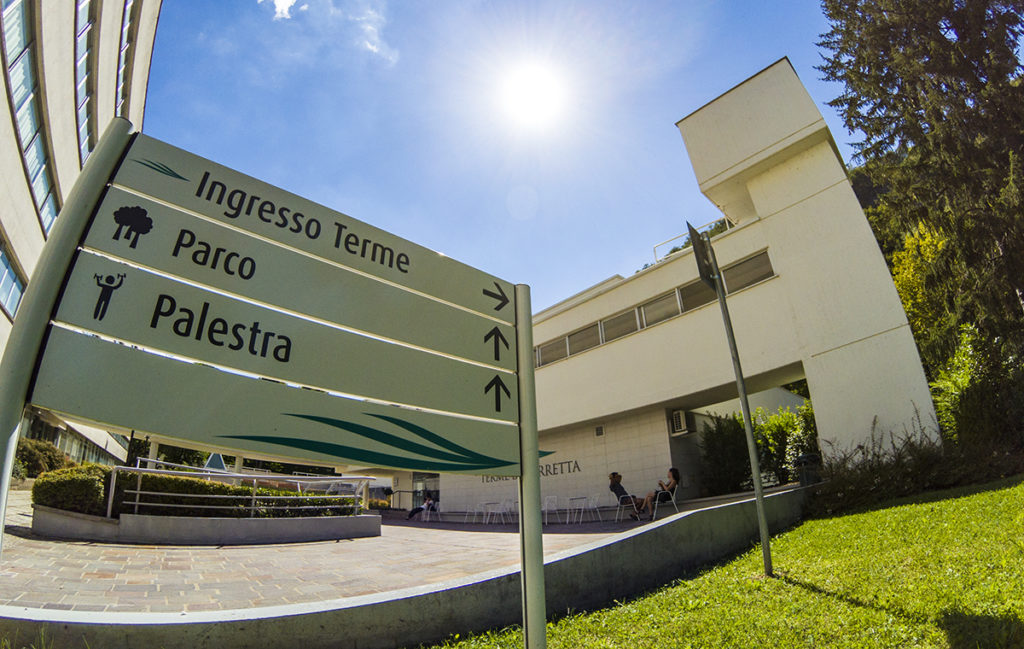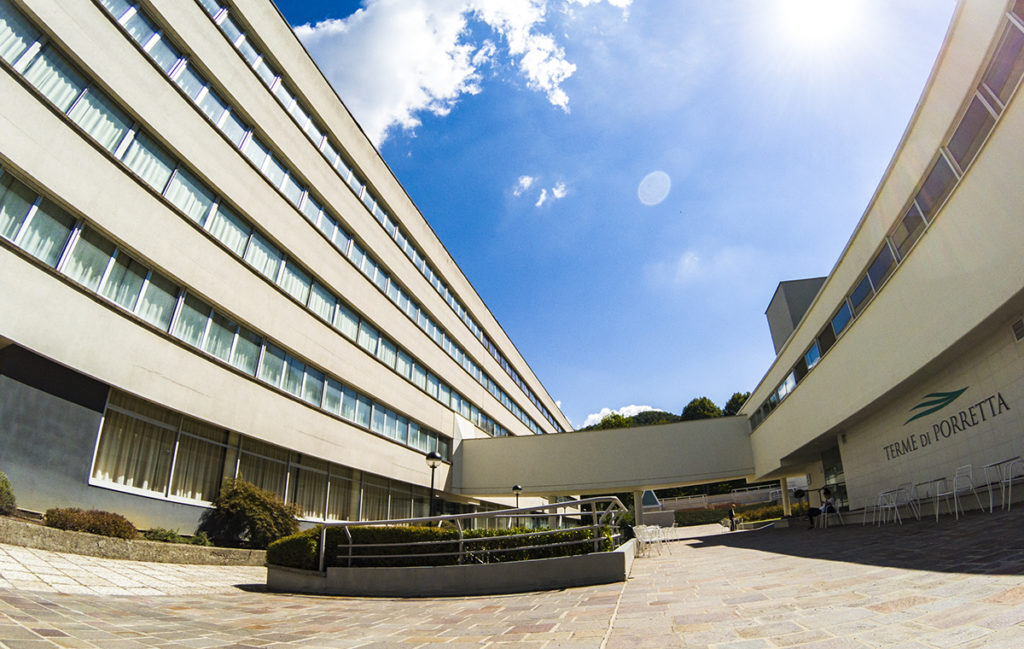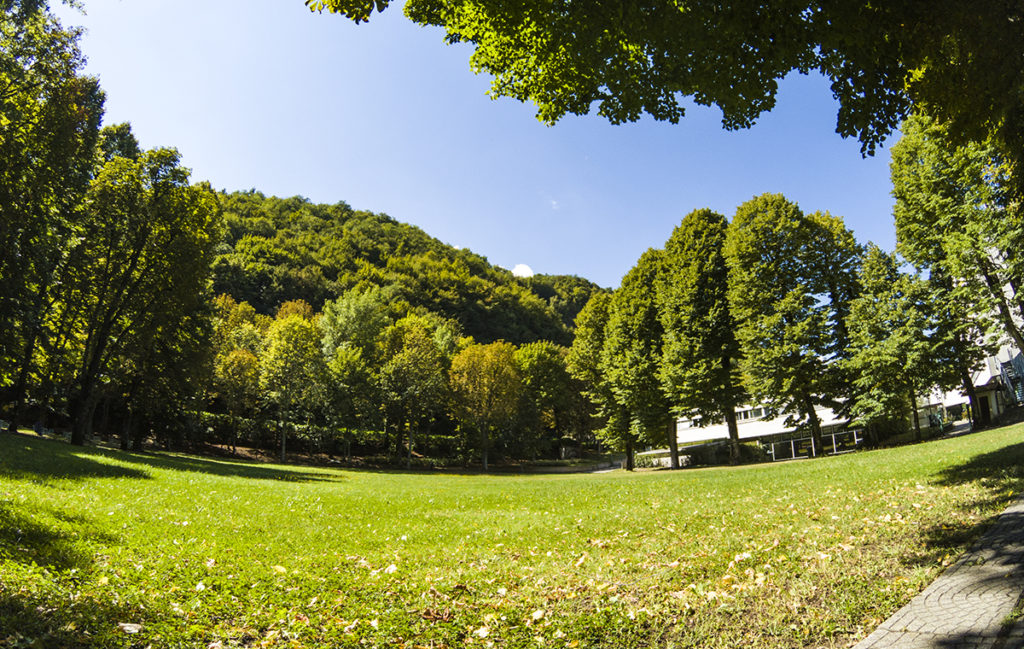© foto Giorgio Barbato
DESCRIPTION
If you look up from high the centre of Porretta, well visible from the Monte della Croce or simply from the parish church, you can notice how it develops along the rivers: first on the Rio Maggiore that still crosses the centre dating back to the Fifteenth century, then on the Reno, on whose axis the Baths of Porretta developed in the nineteenth century. The Rio Maggiore characterizes the urban layout of the ancient centre: from narrow and long squares to the streets lined up parallel to the river. The Eighteenth-century Porretta is characterized by three main axes: the Reno river, the road and the Porrettana railway.
Starting from the railway station square Jean Louis Protche, the designer of the railway itself, you cross the beautiful stone bridge over the Reno River arriving at the monument to the fallen, made in the years 1922-23 by the sculptor Ercole Drei.
On the right, the Porrettana road continues with the name of Viale Mazzini, the shopping centre and the promenade, at the beginning of which you can visit the nineteenth century Church of the Immaculate Conception also known as the Church of the Friars. Inside there is one of the most famous mechanical niches.
On the left hand there is Piazza della Libertà. The square follows the course of the Rio Maggiore in its southern part. Notable buildings are the municipal building and the former Casa del Fascio, built in the solemn and classical style of the 20th century.
On the right, one of the most beautiful houses in the square belonged to Guglielmo Marconi’s father who was born at the nearby Tre Croci of Capugnano. From the square you continue uphill to the Terme Alte, where you still breathe the air of the ancient thermal baths. Turning to the right and continuing on via Ranuzzi you reach the parish church of Santa Maria Maddalena. Impressive and elegant, it offers a truly wide and evocative view of Porretta.
Next to the Church stands the oratory of the confraternity of the Santissimo Sacramento today called San Rocco, dating back to the mid-eighteenth century. Returning back to the station, crossing the Public Gardens, the railway line, you can find on the left, the spa facilities that rise near the spring of La Puzzola.
A little further, crossing the Reno, you will find the Sanctuary of Madonna del Ponte, built around 1578 which today is the protector of the basketball players.

